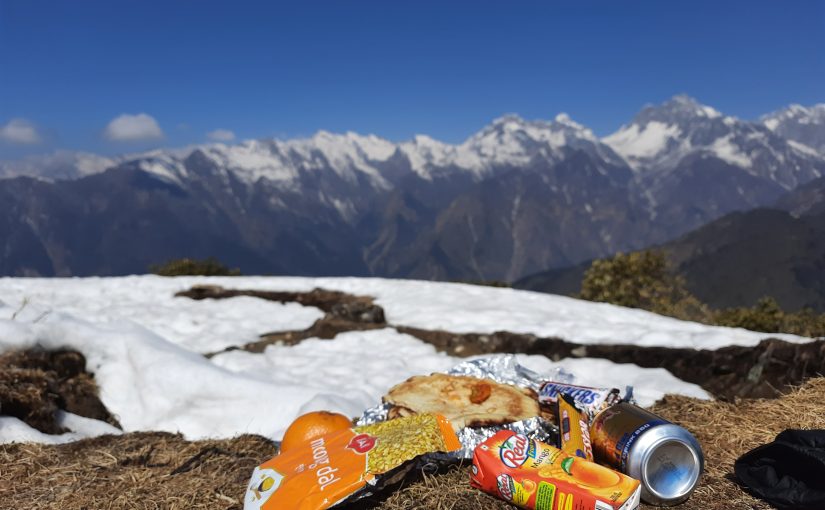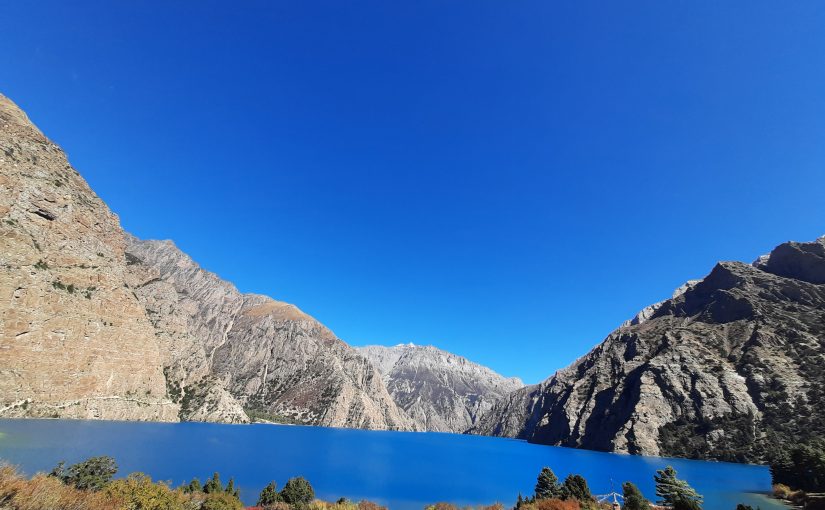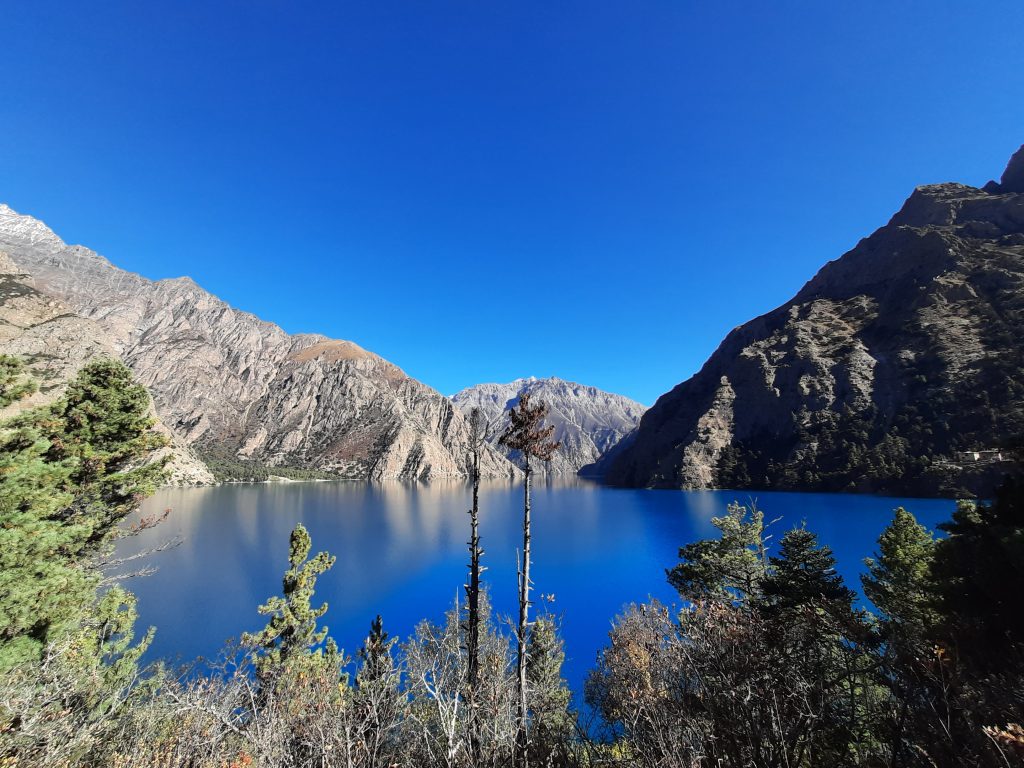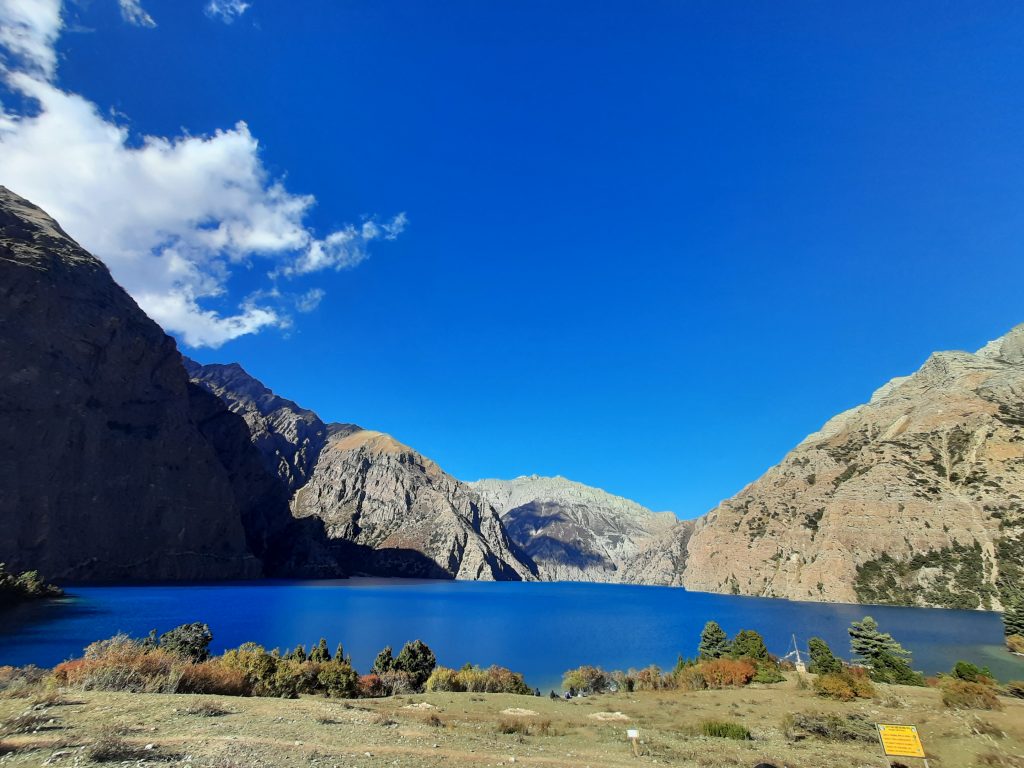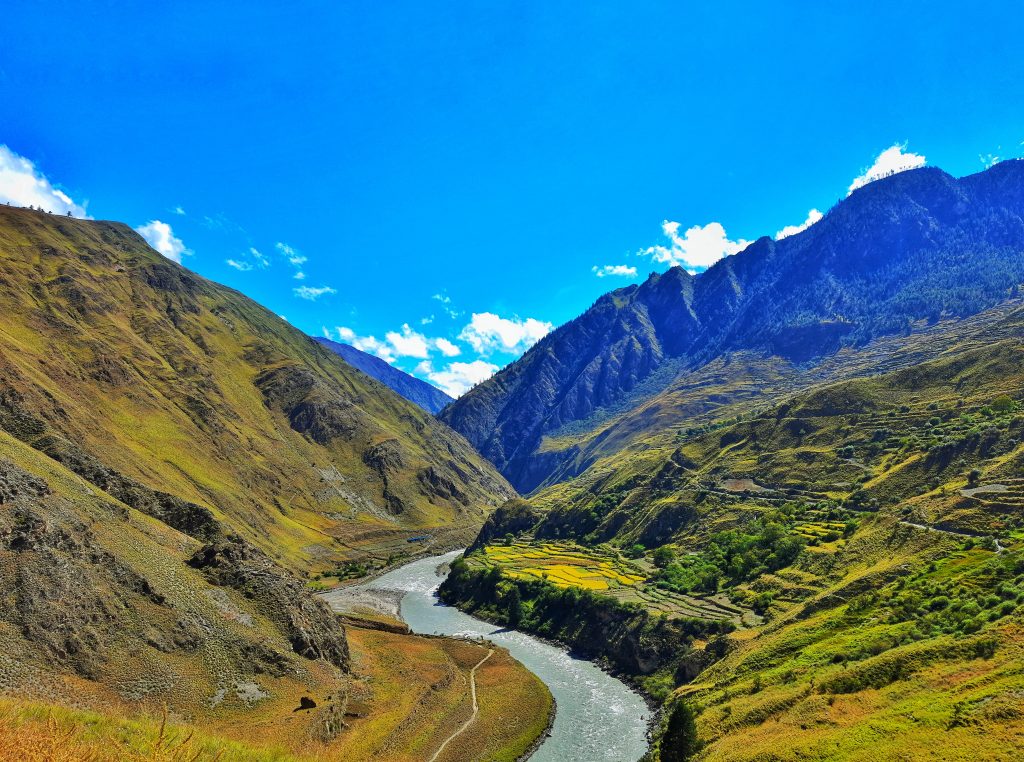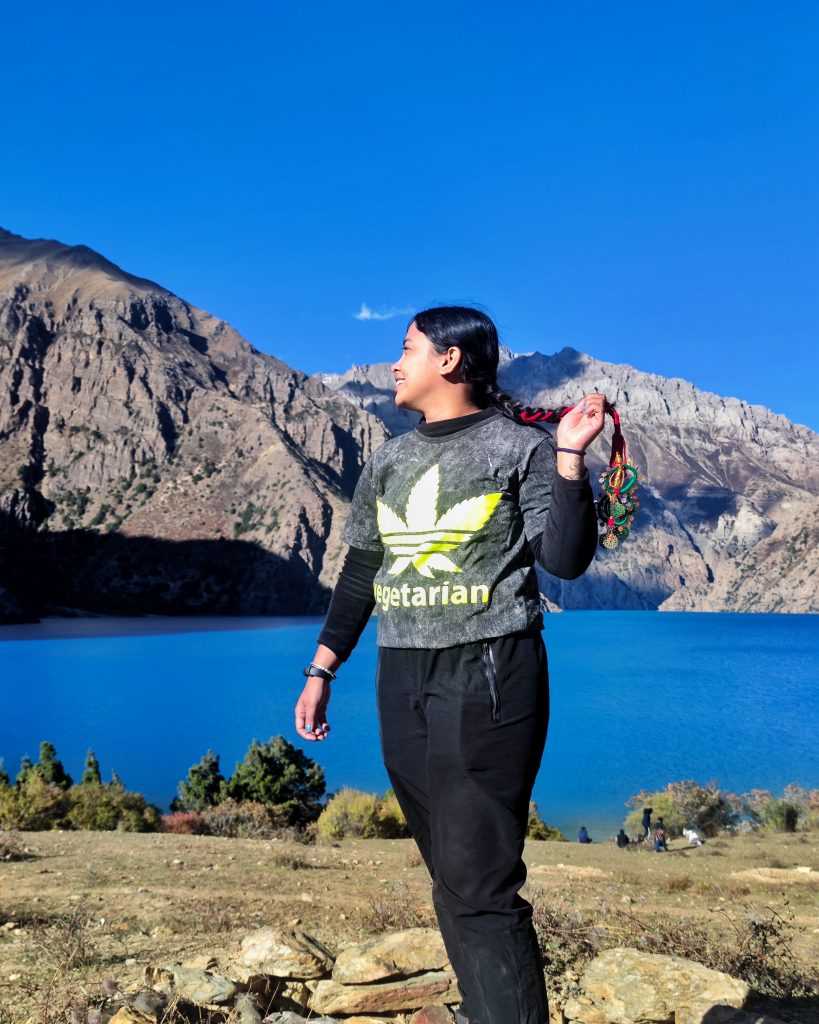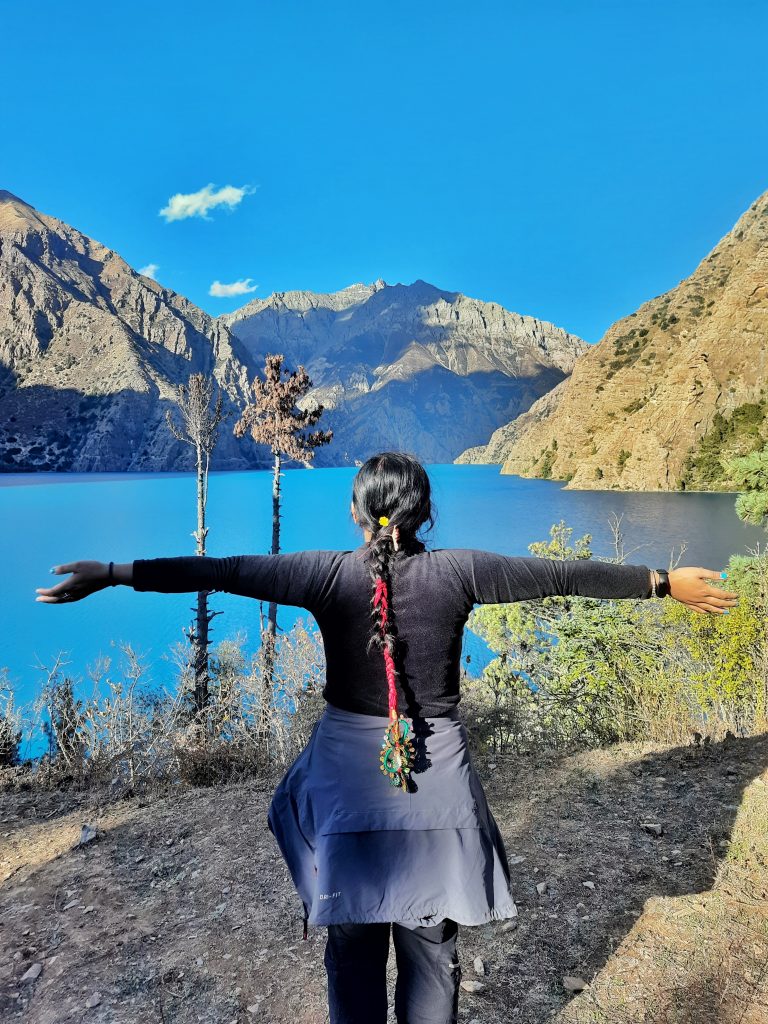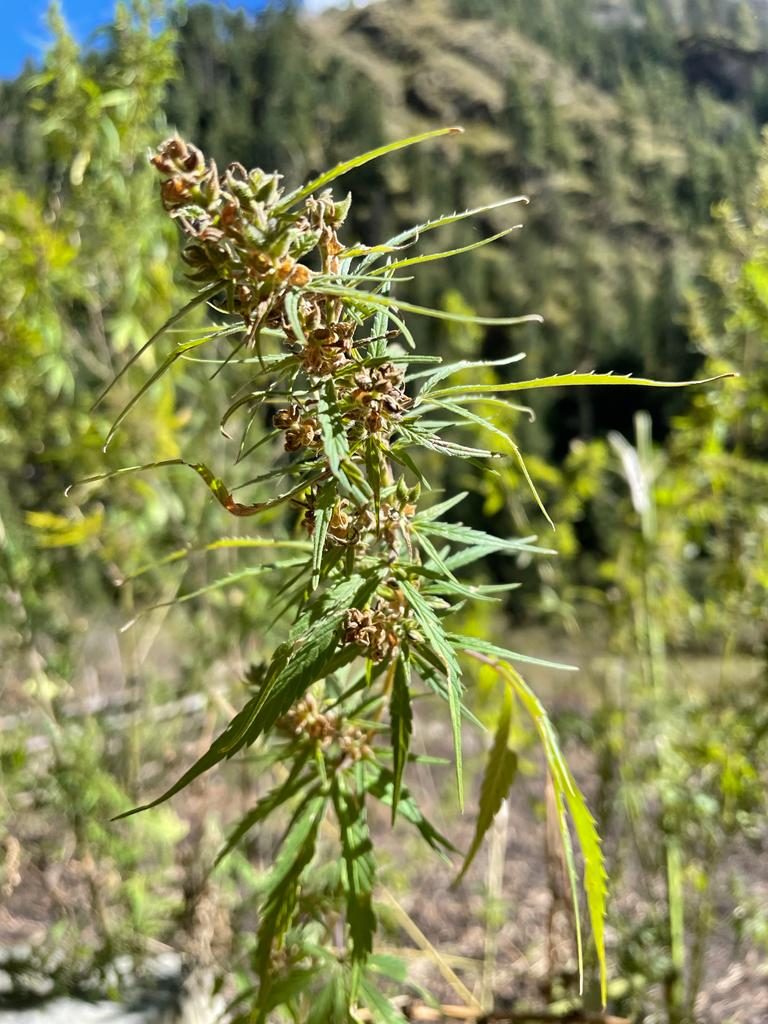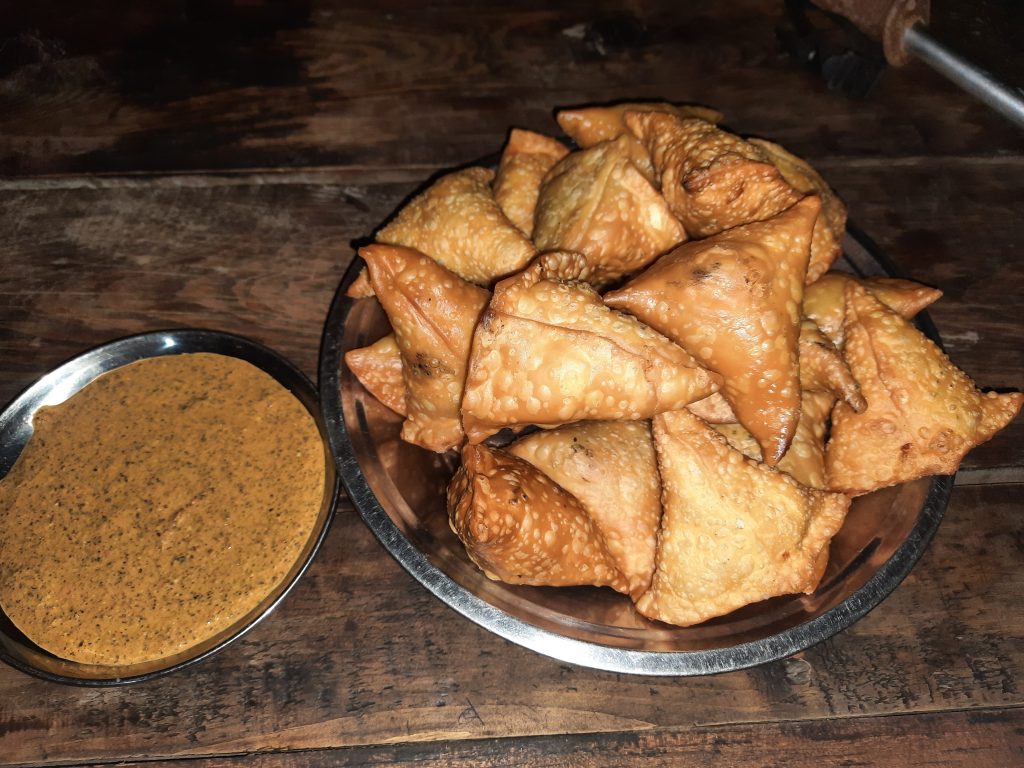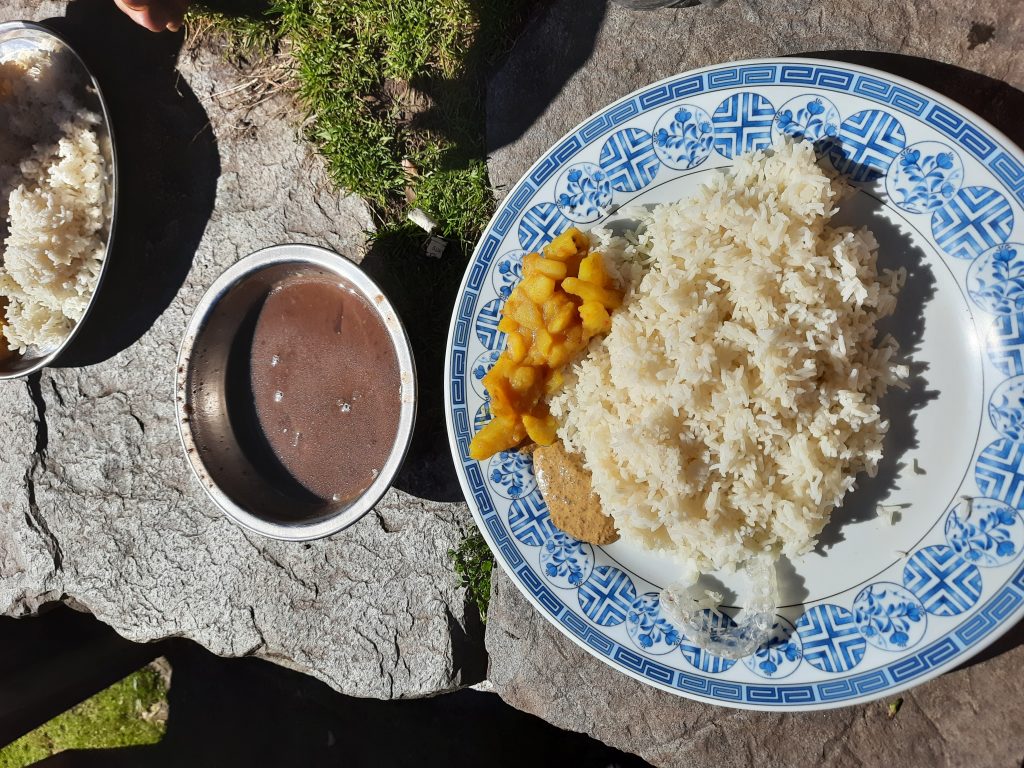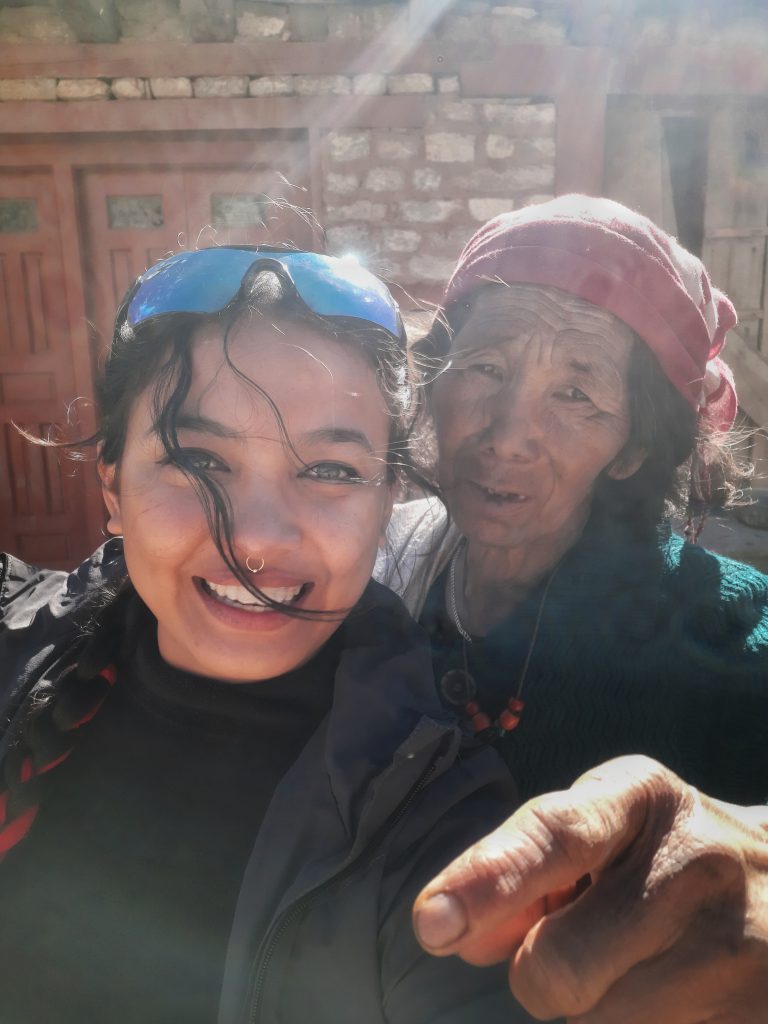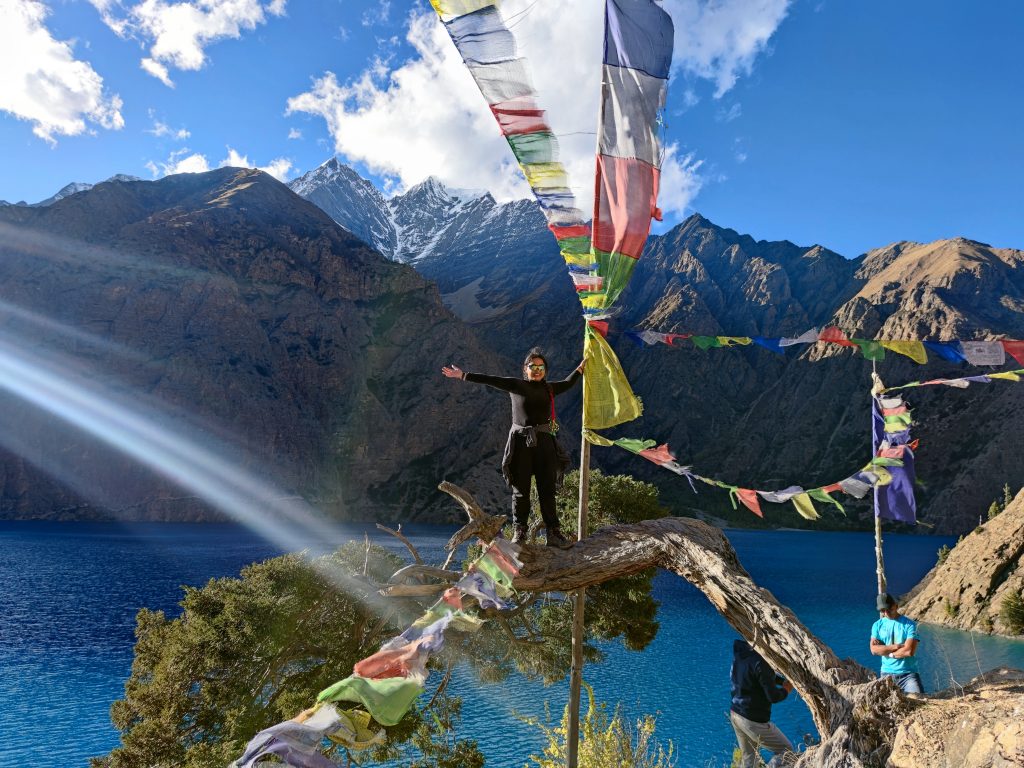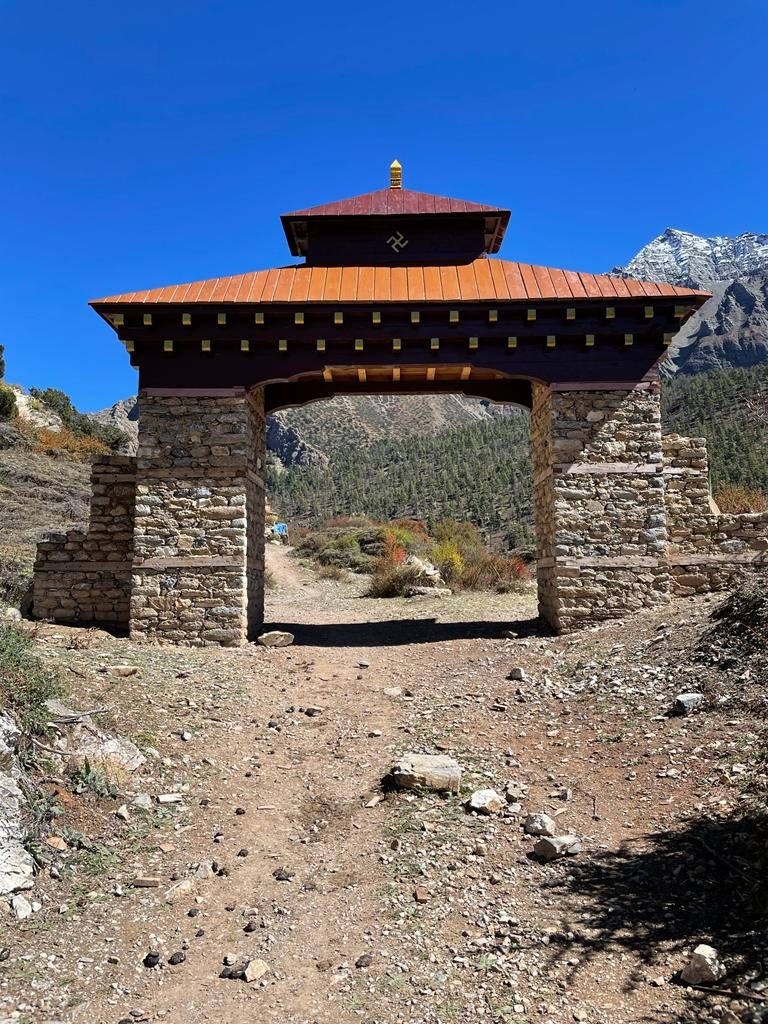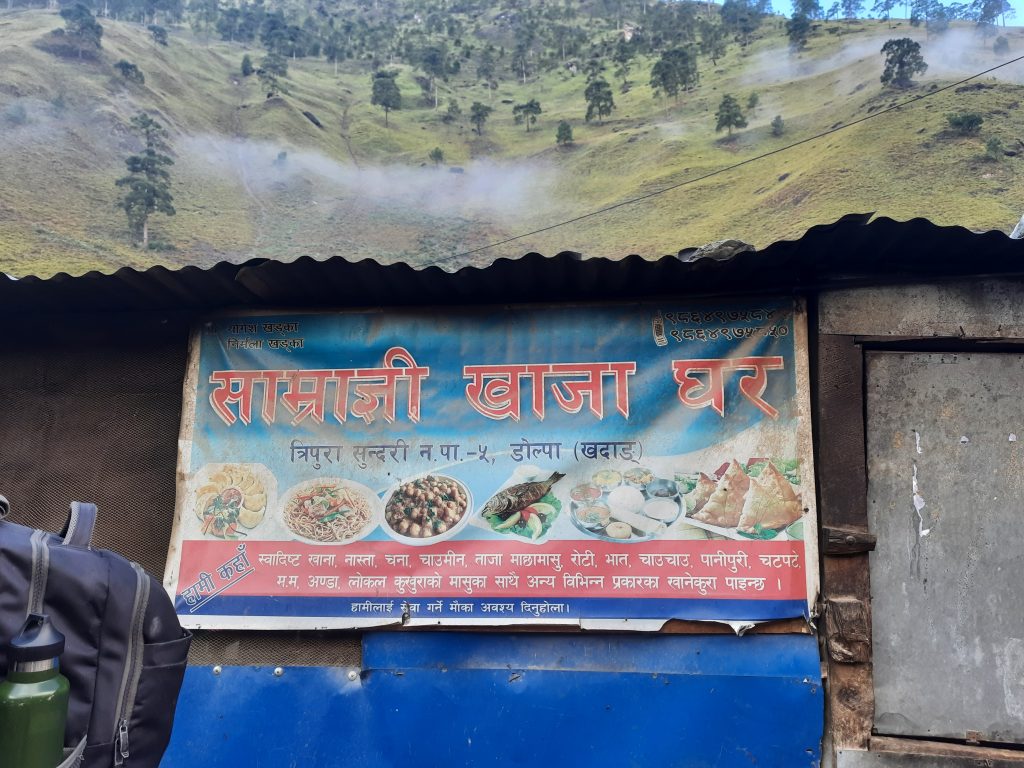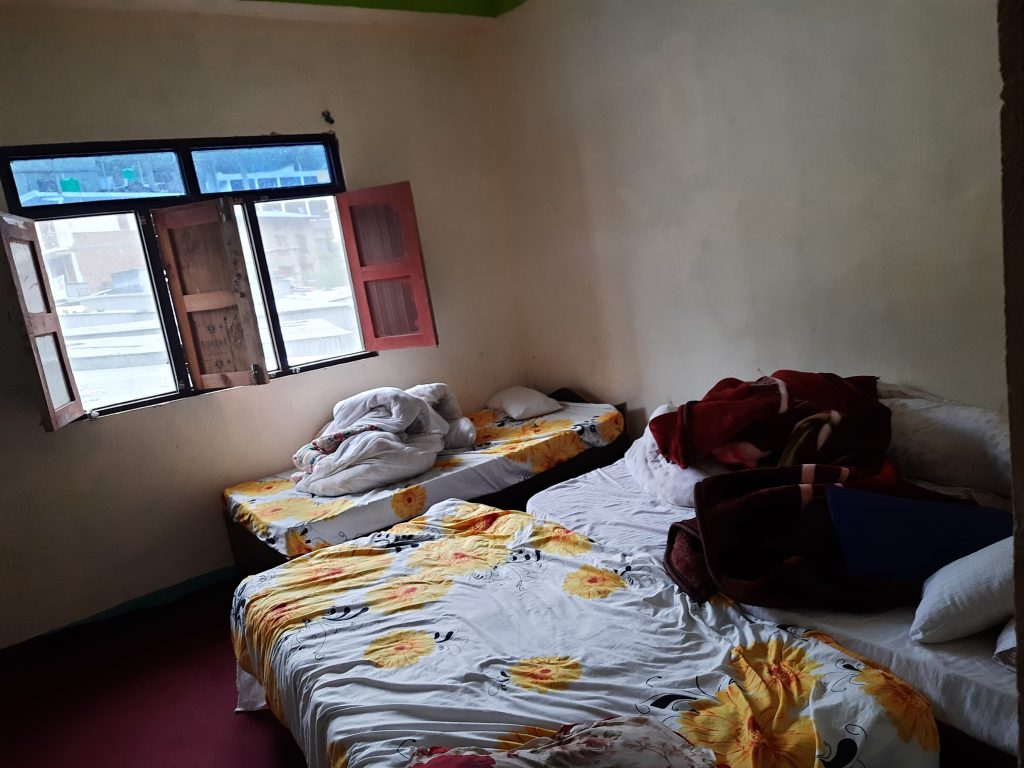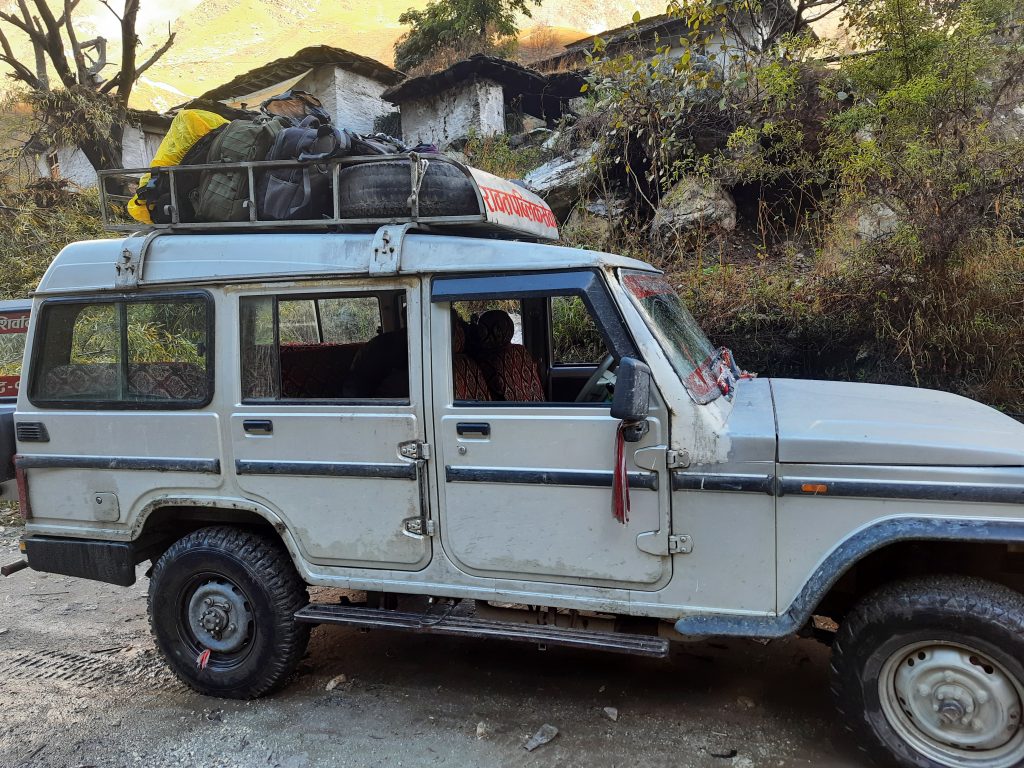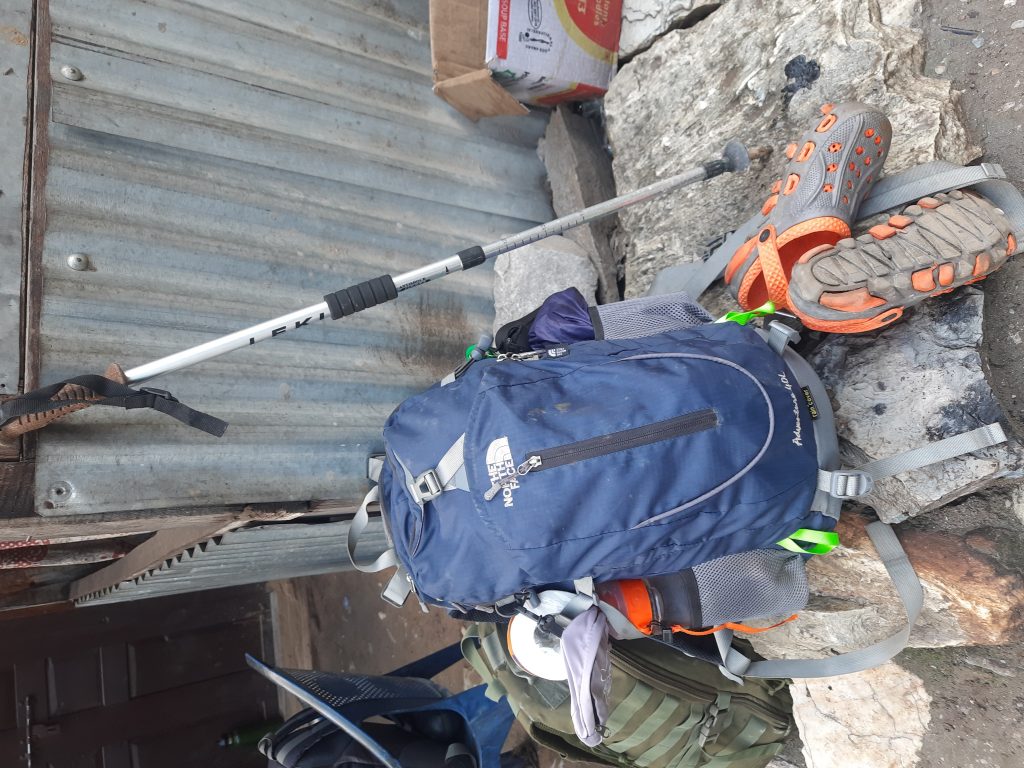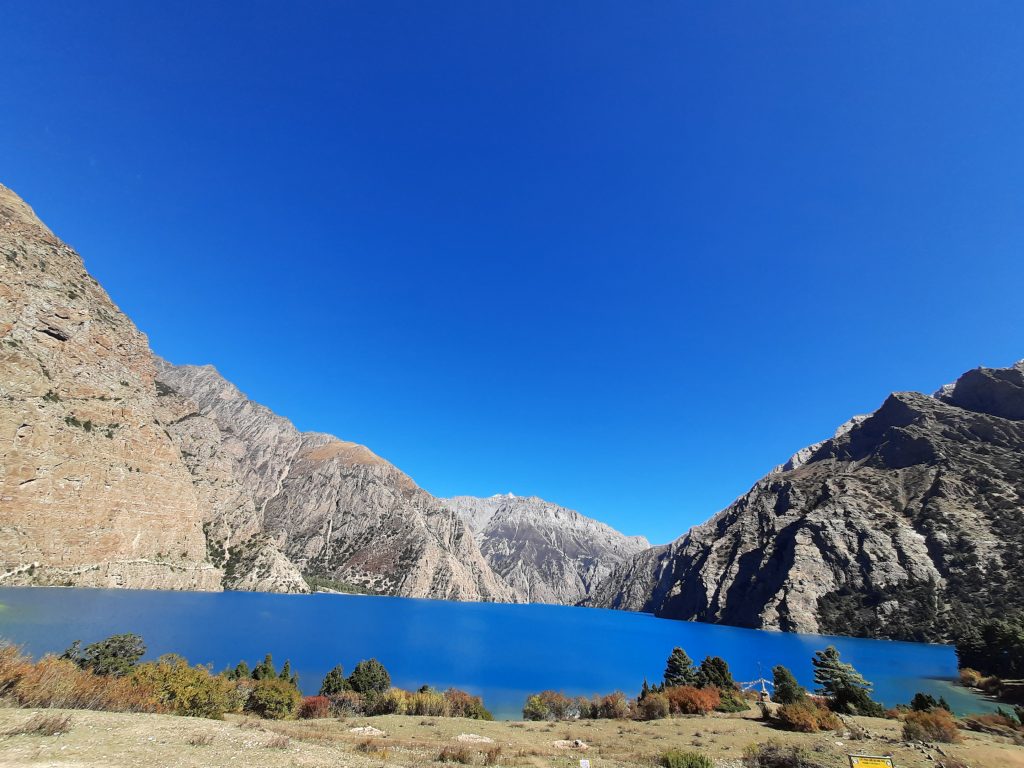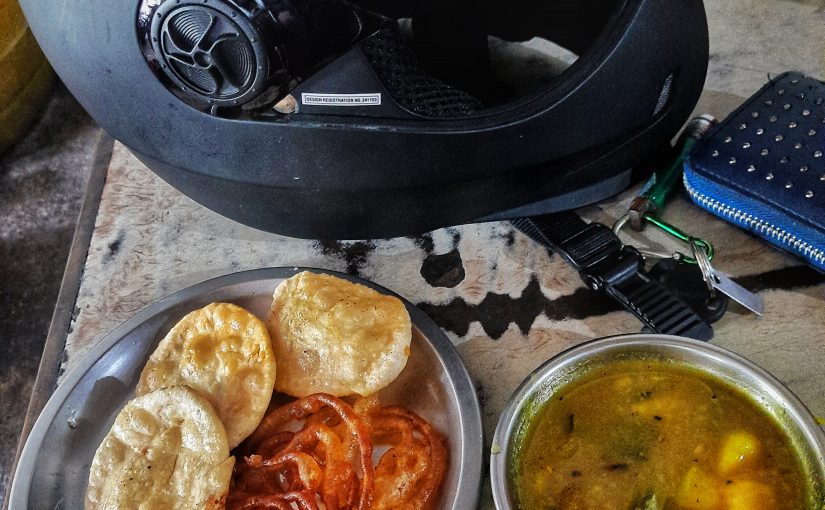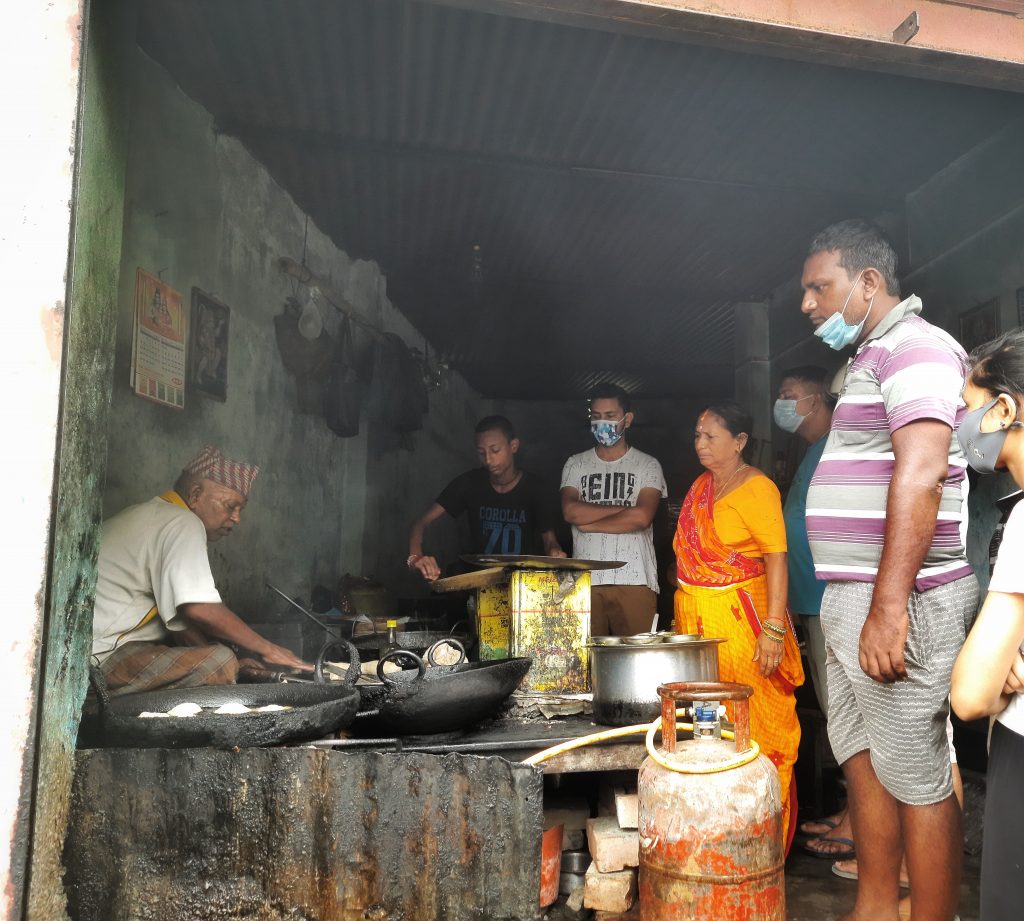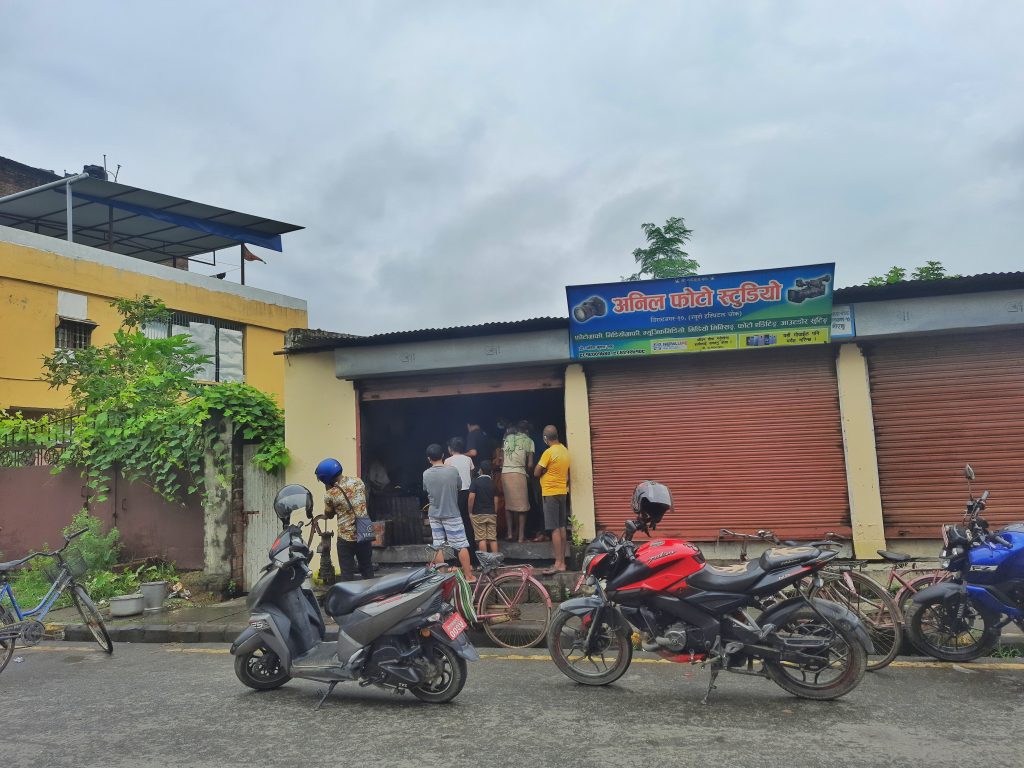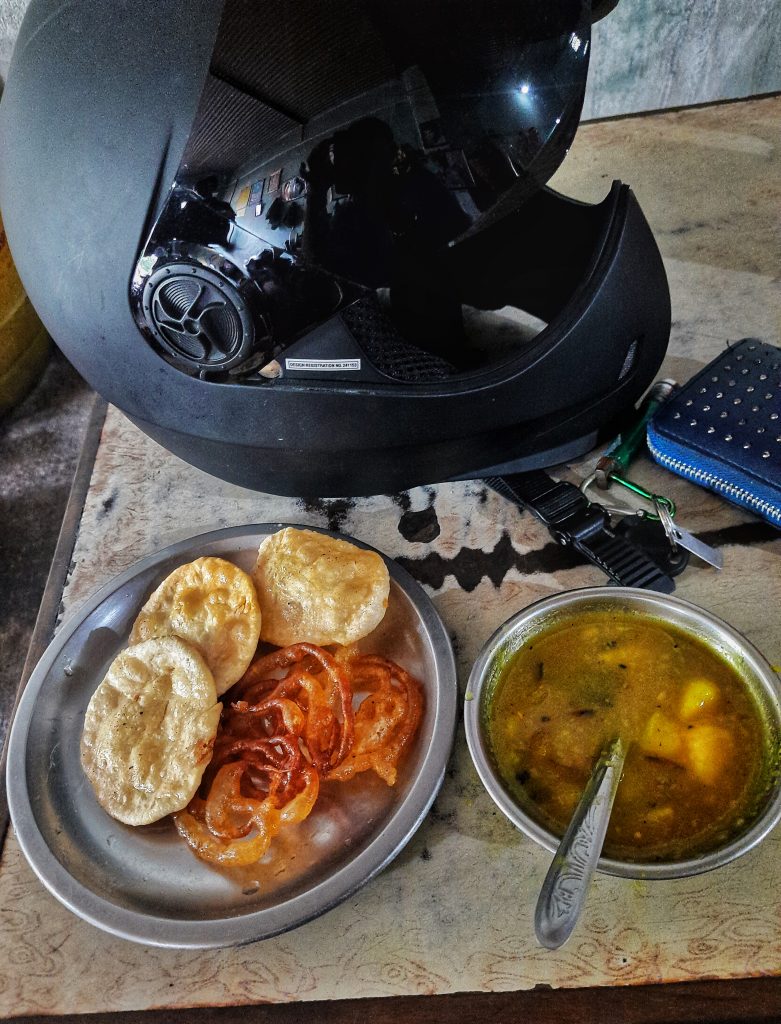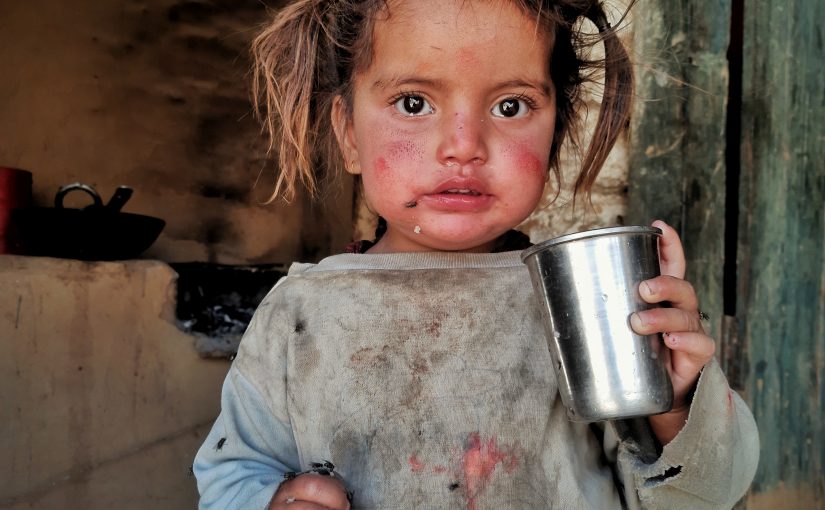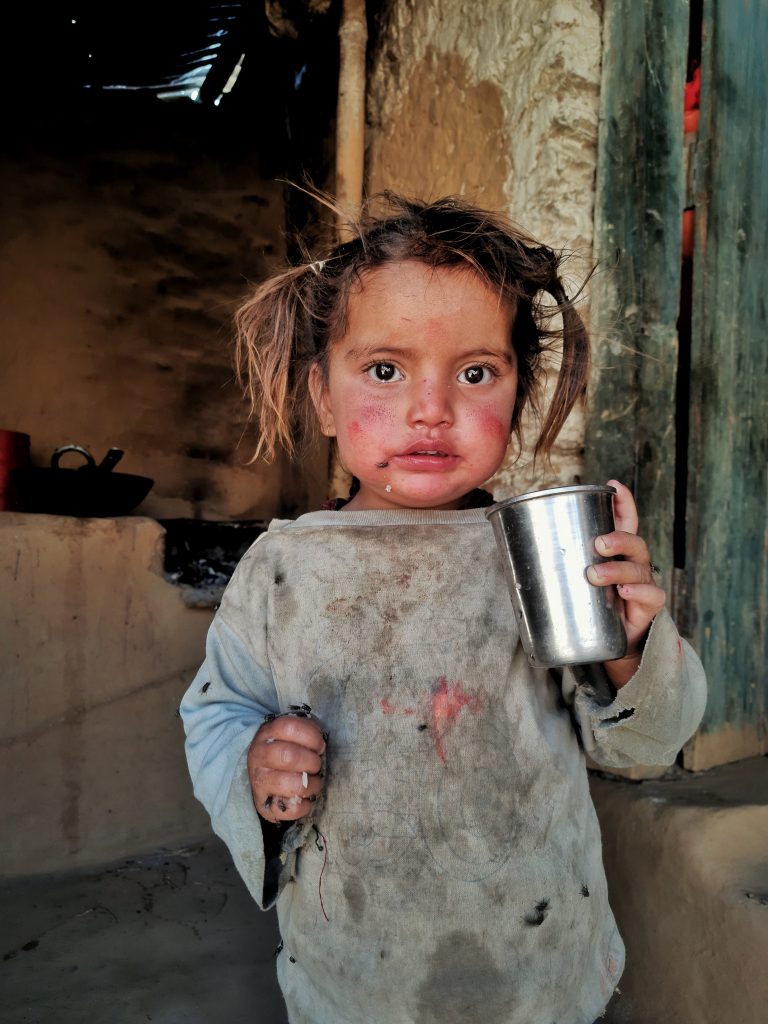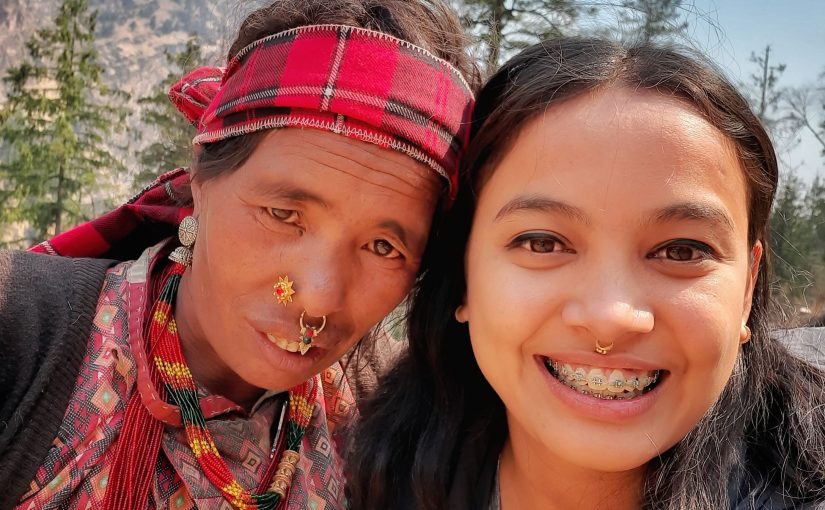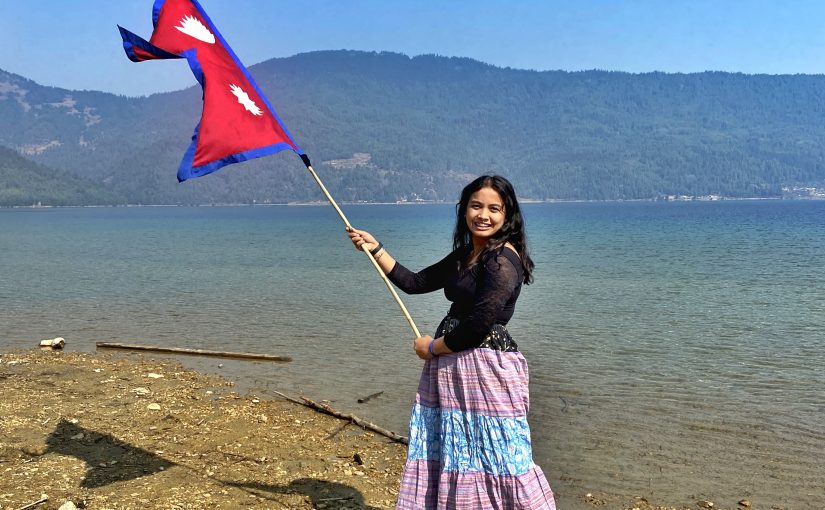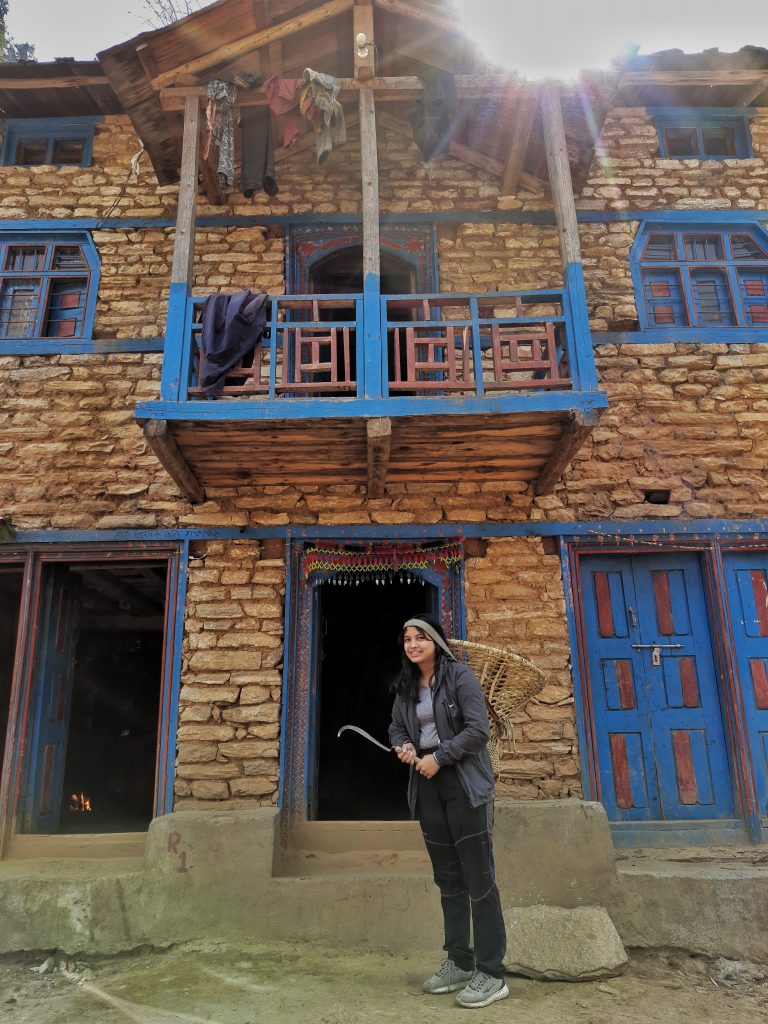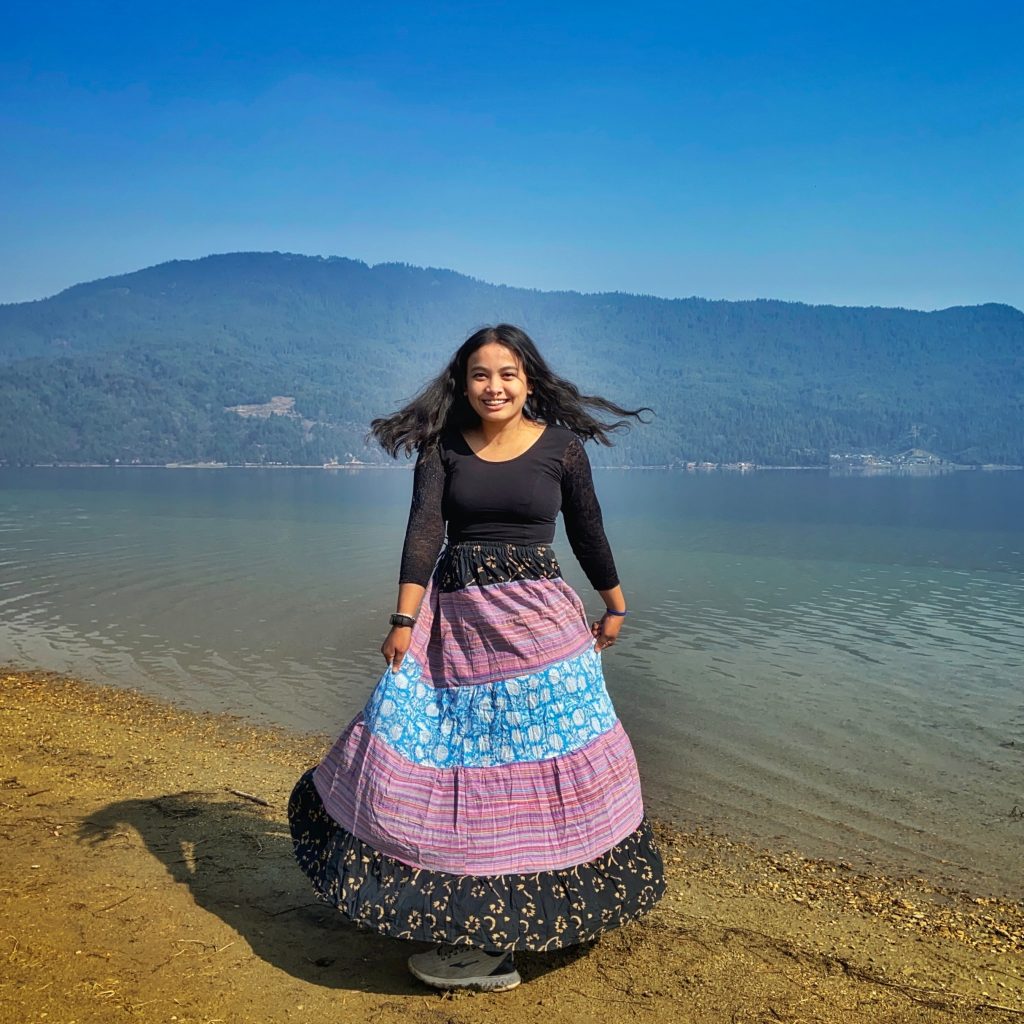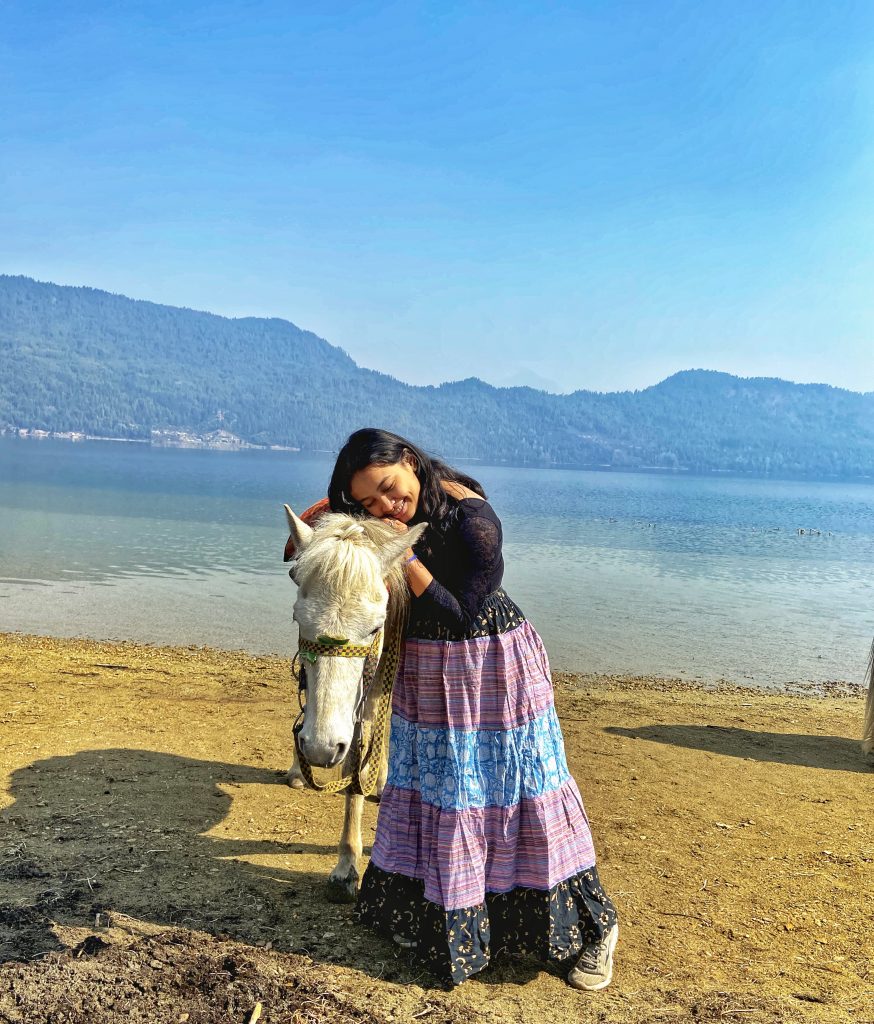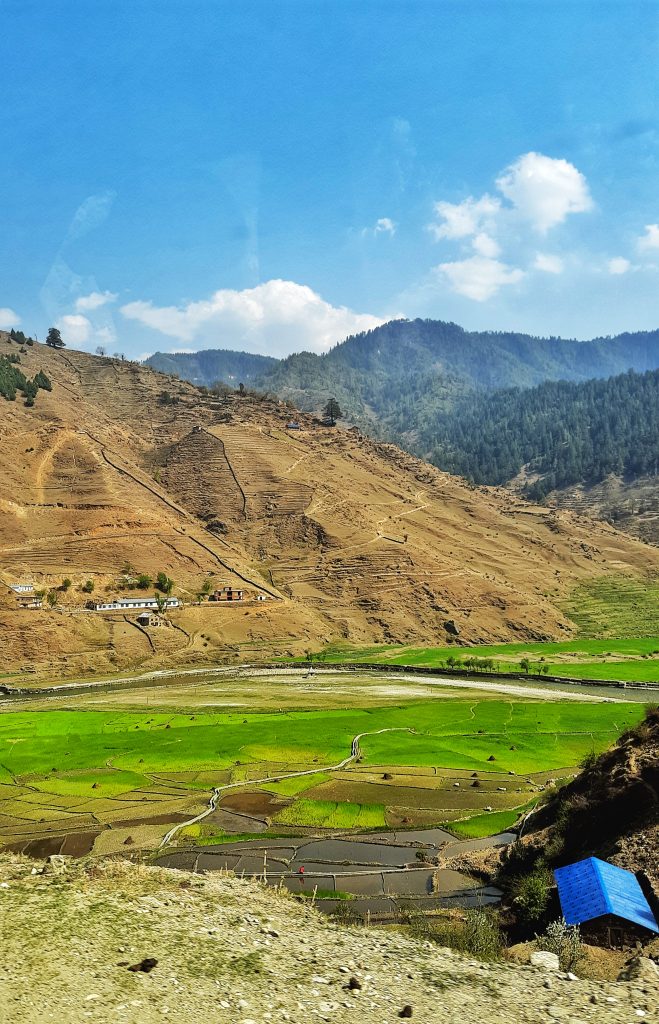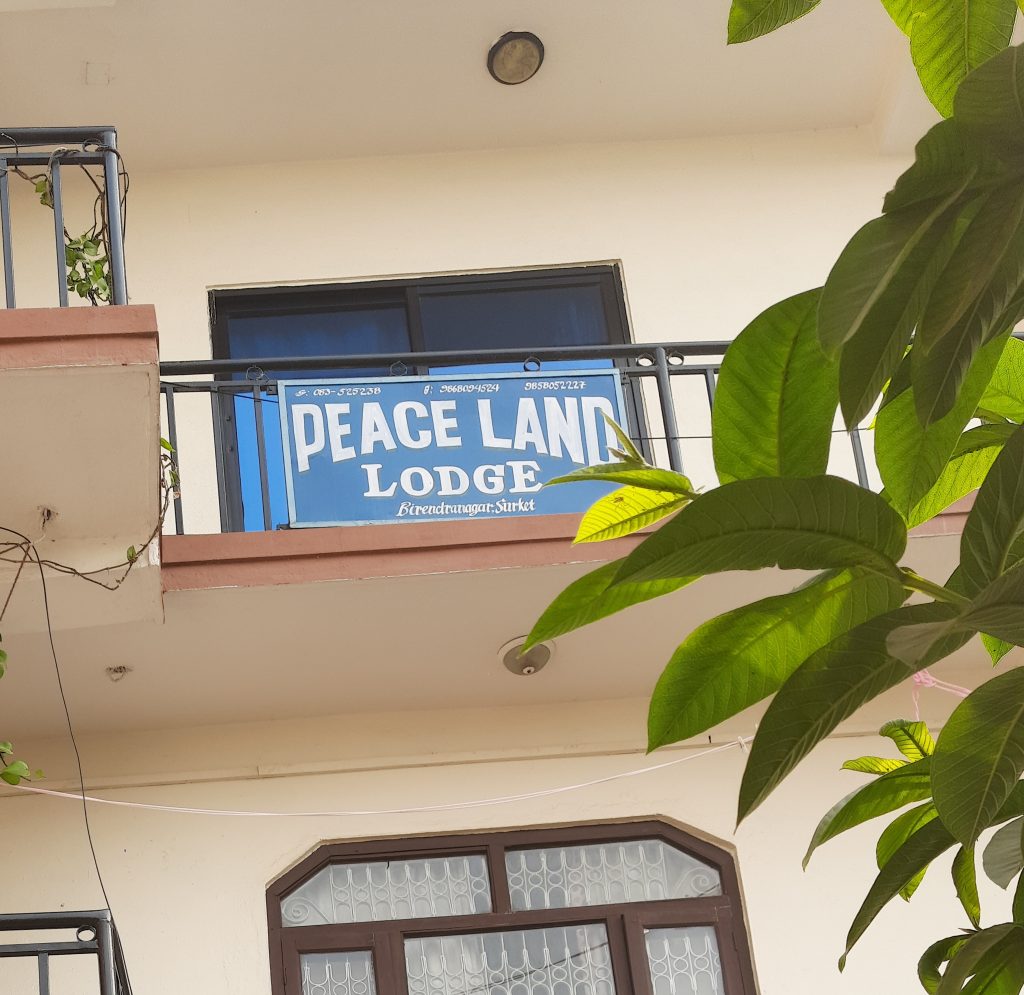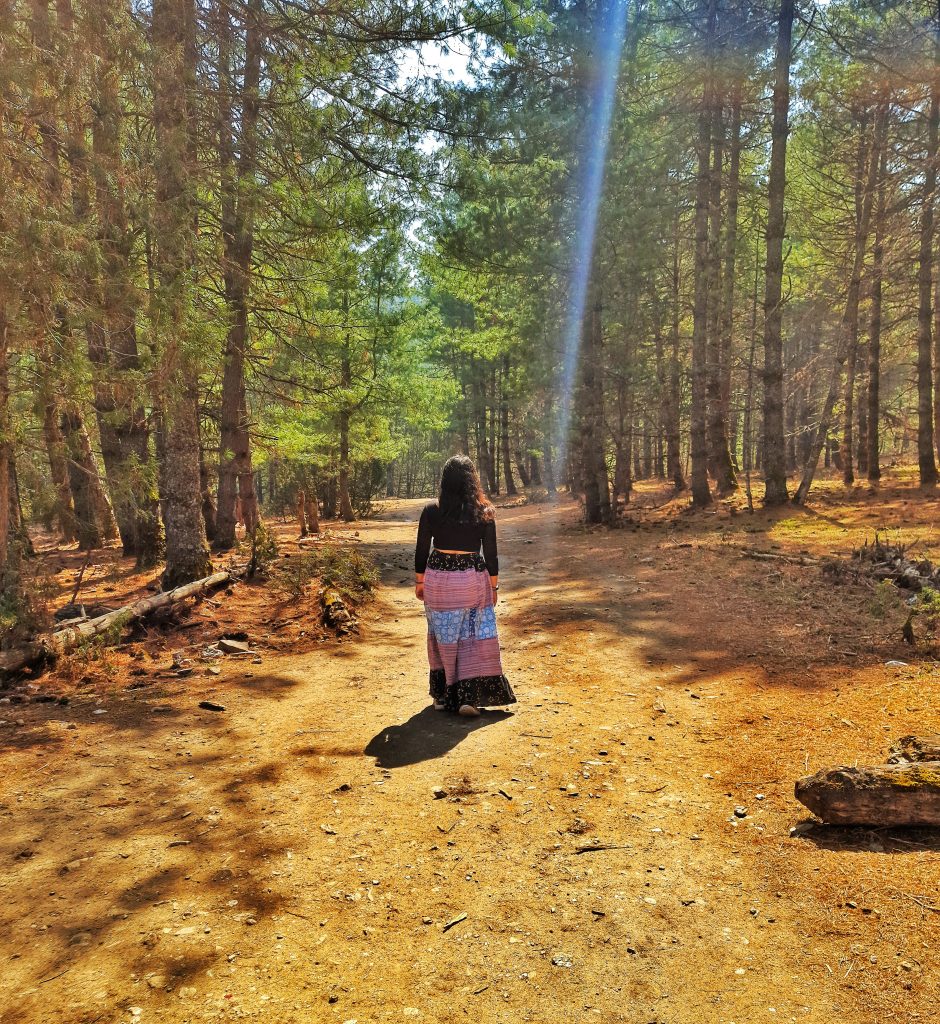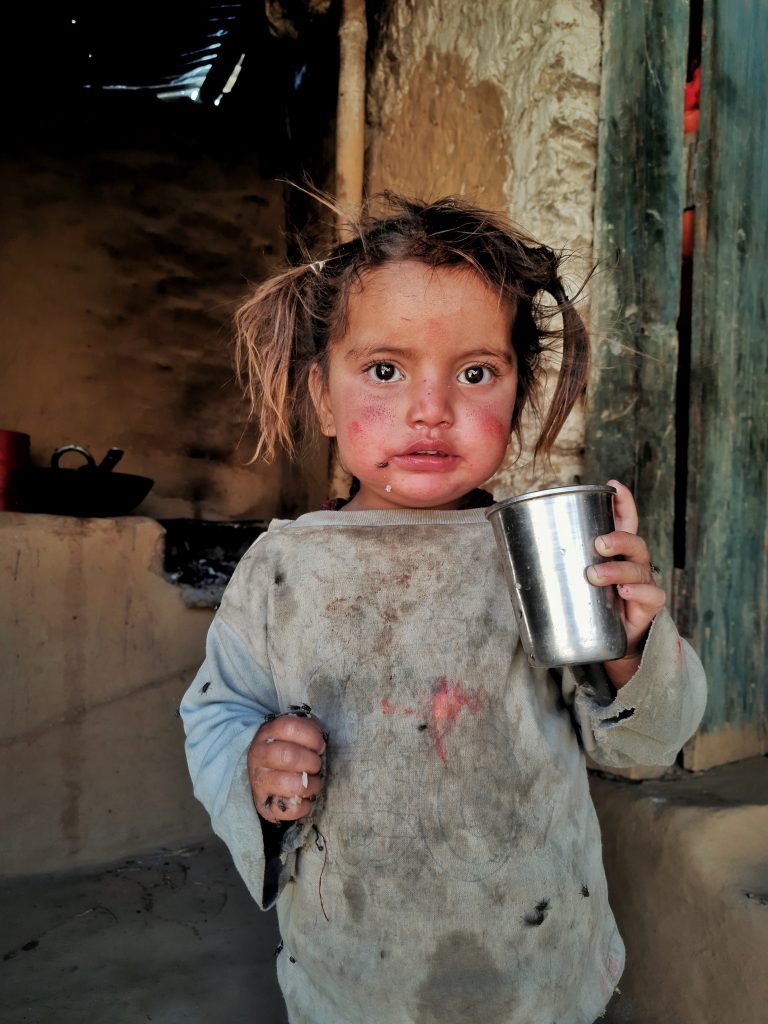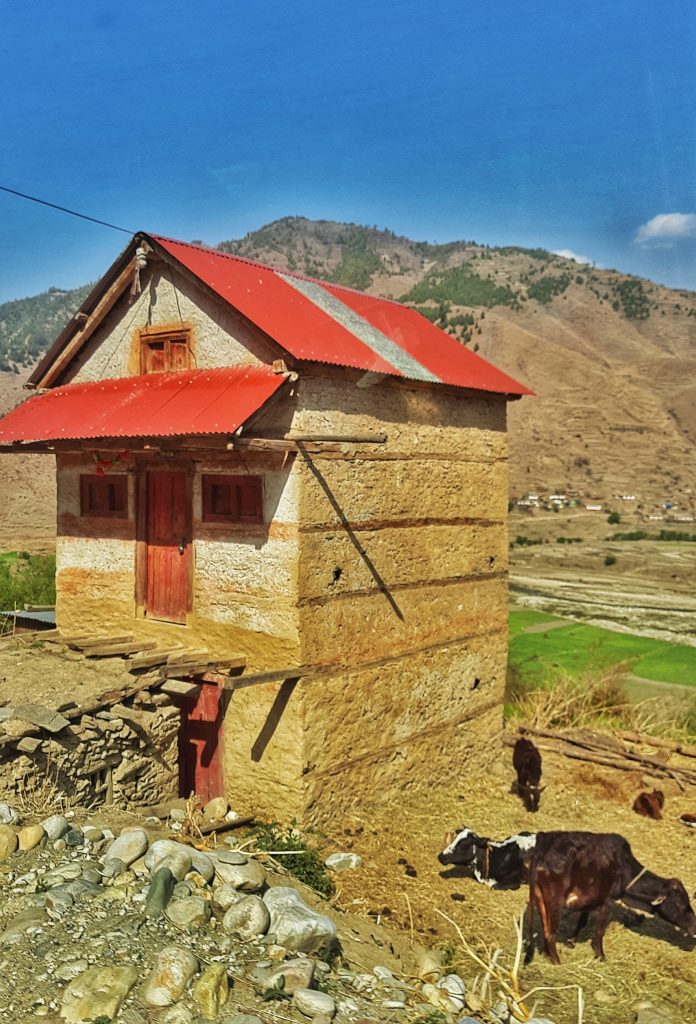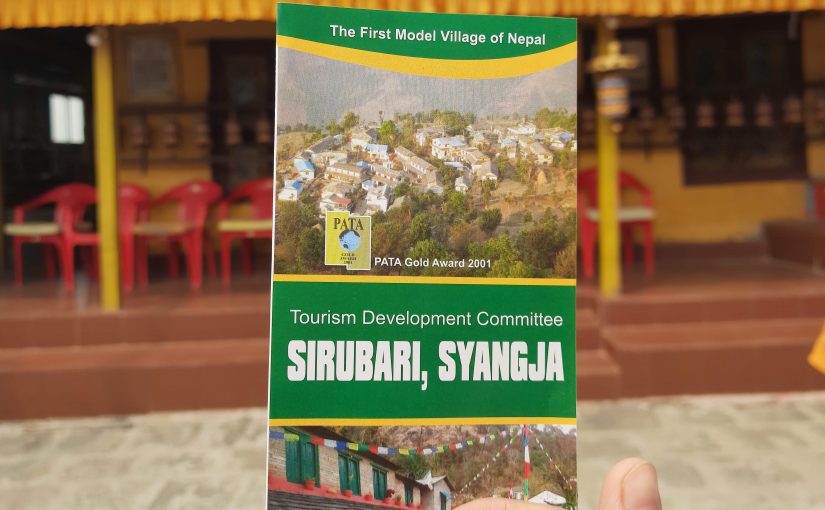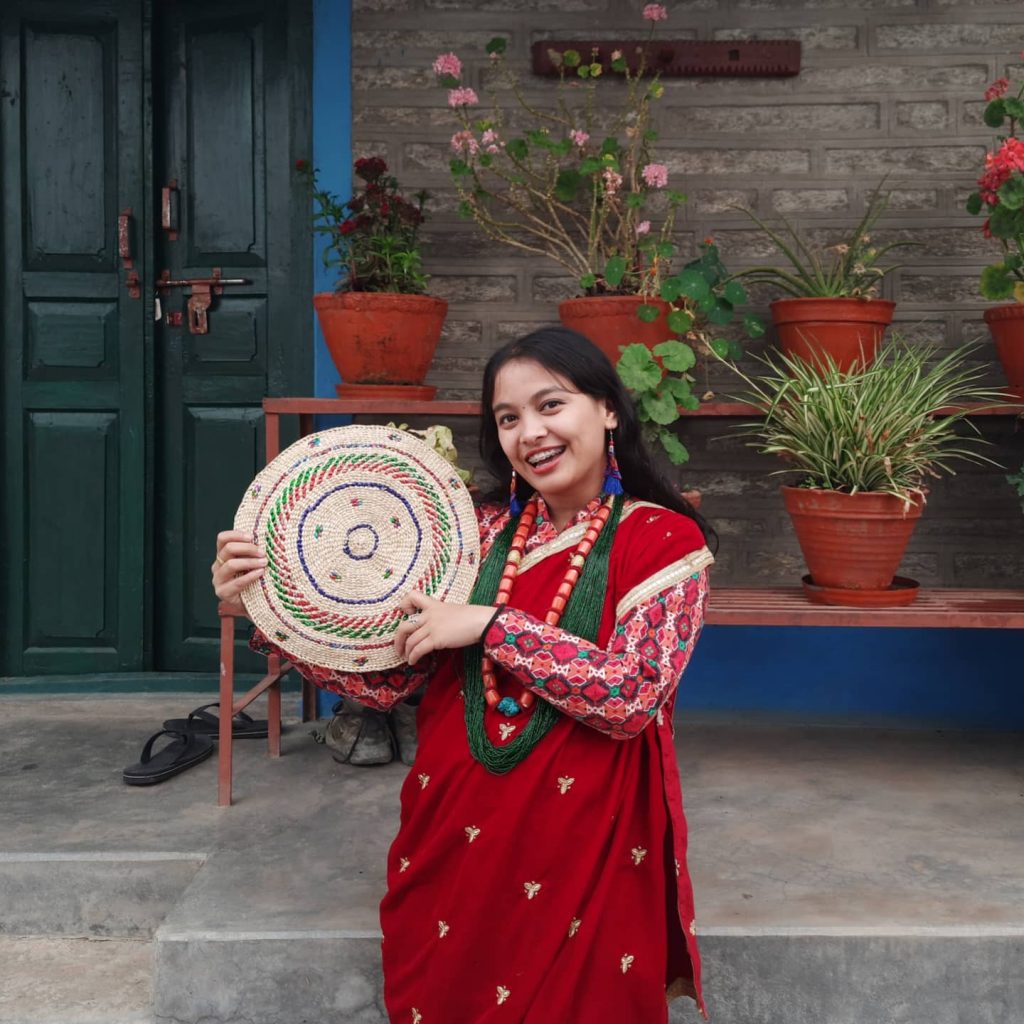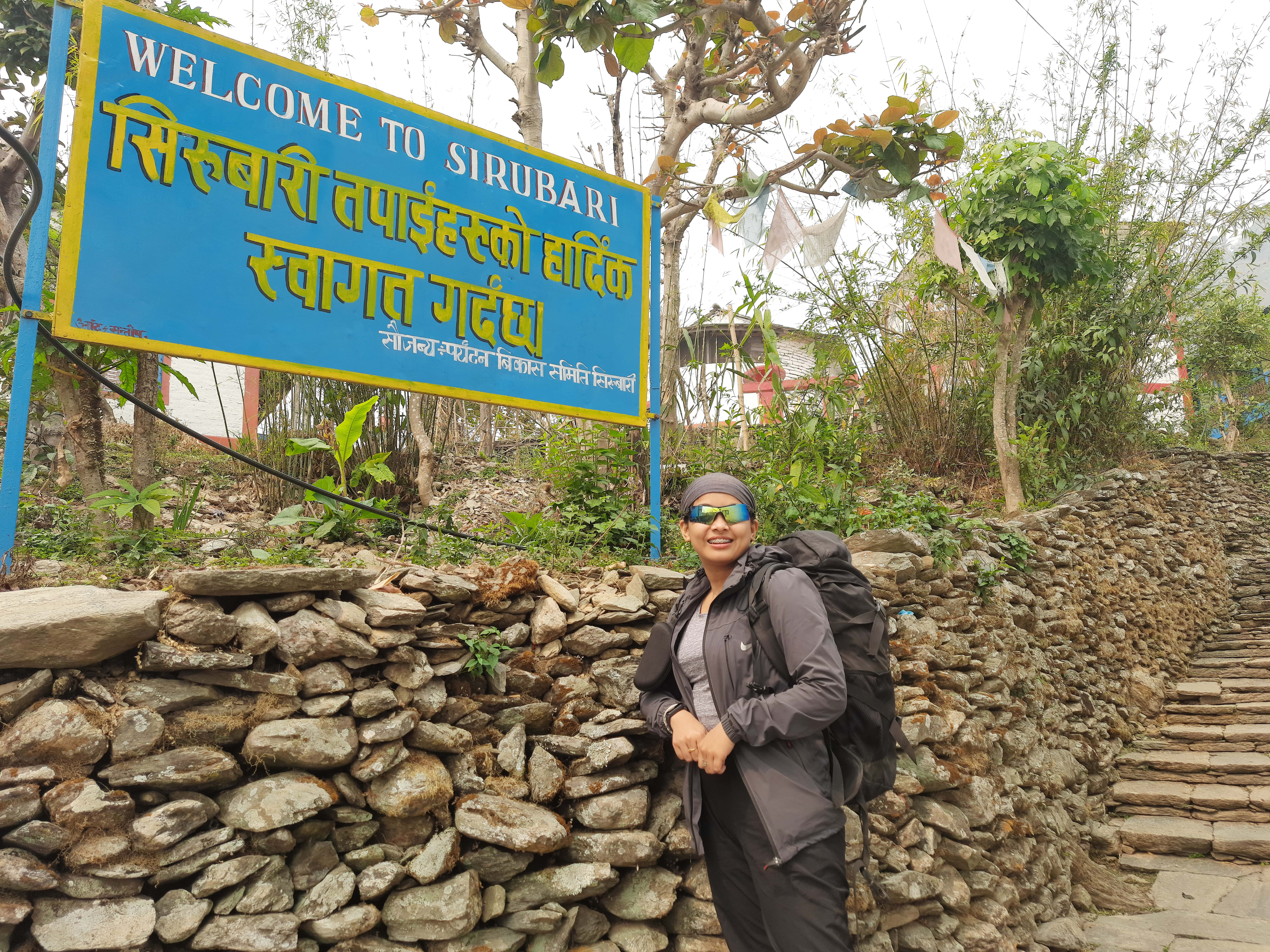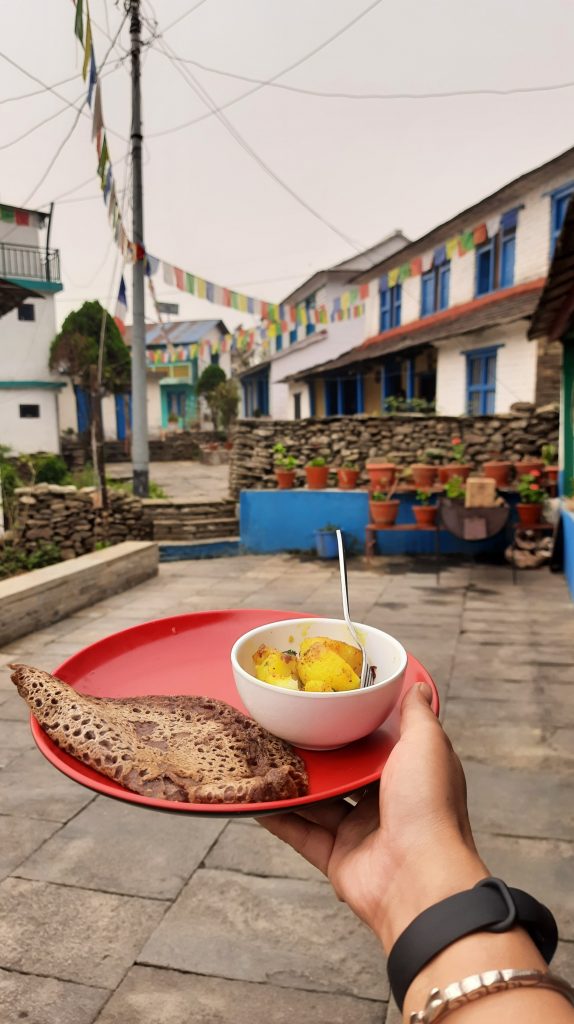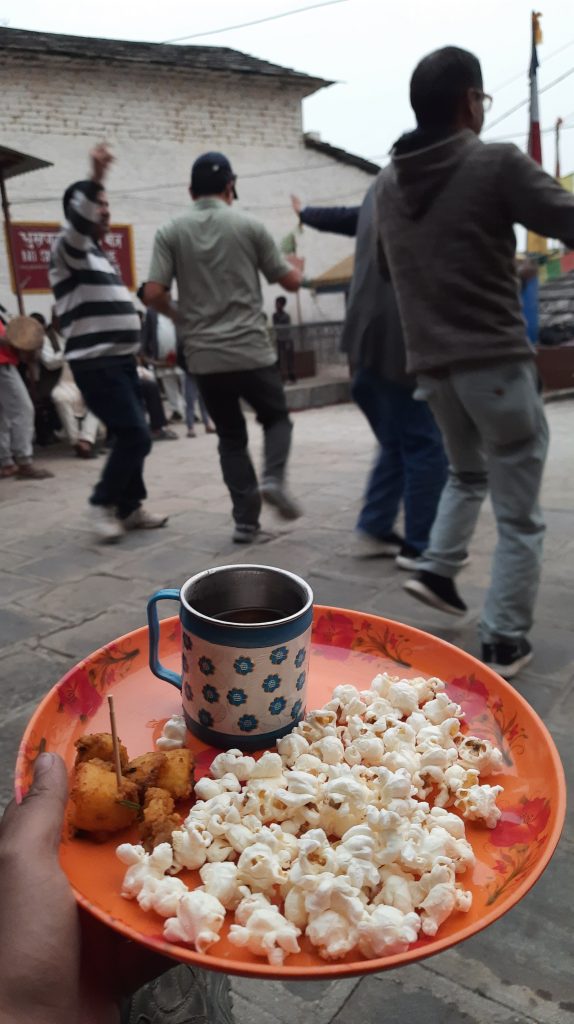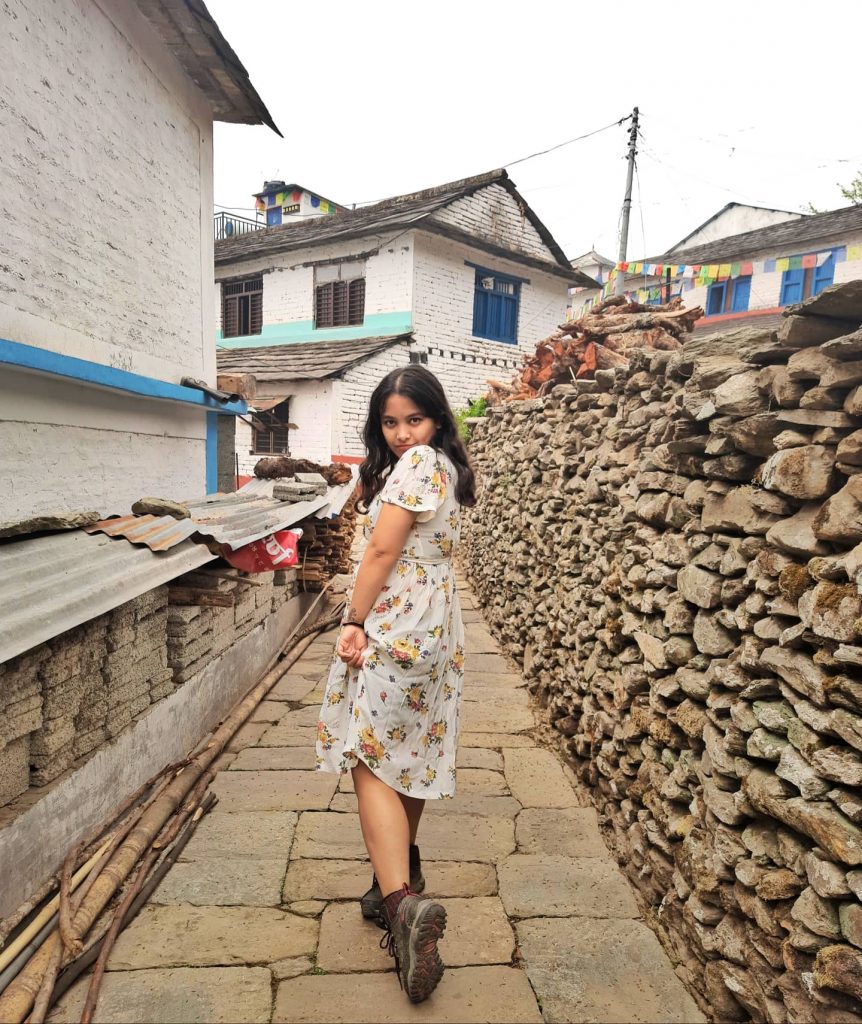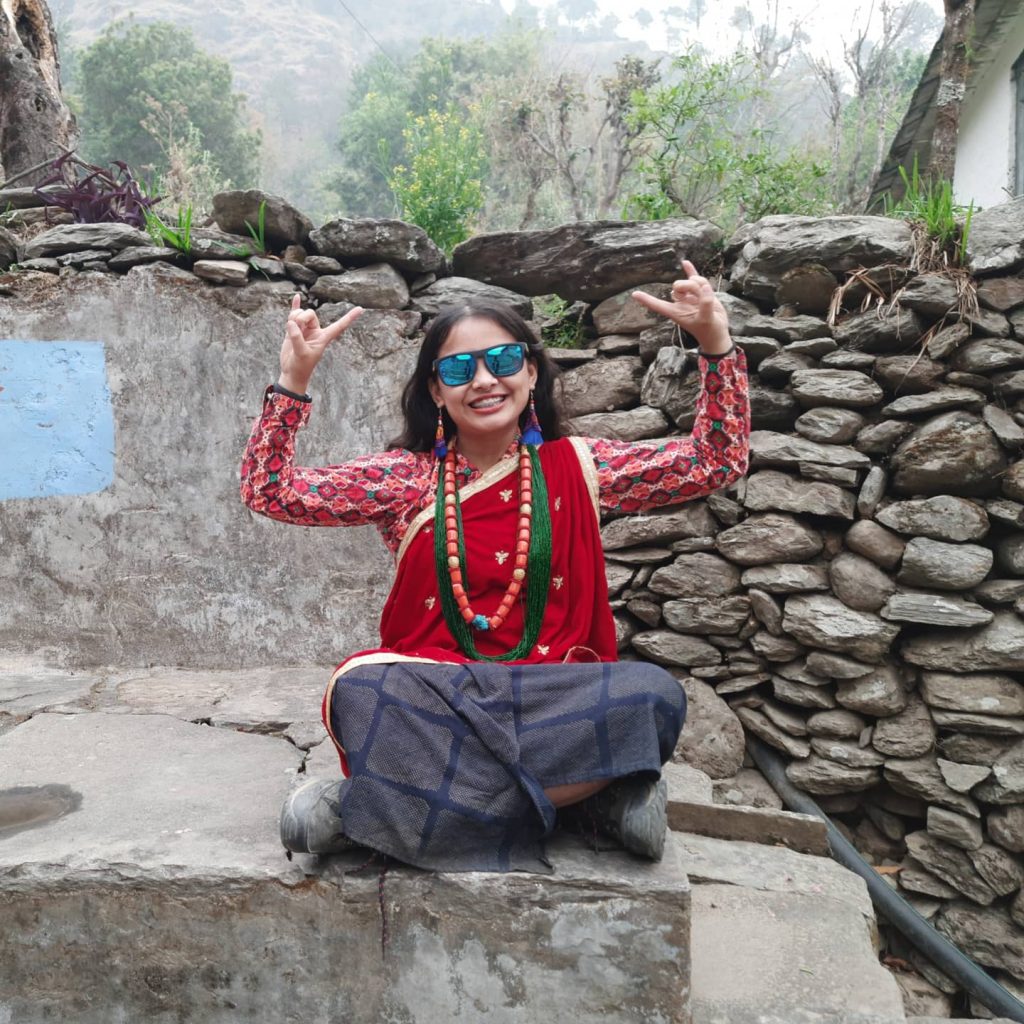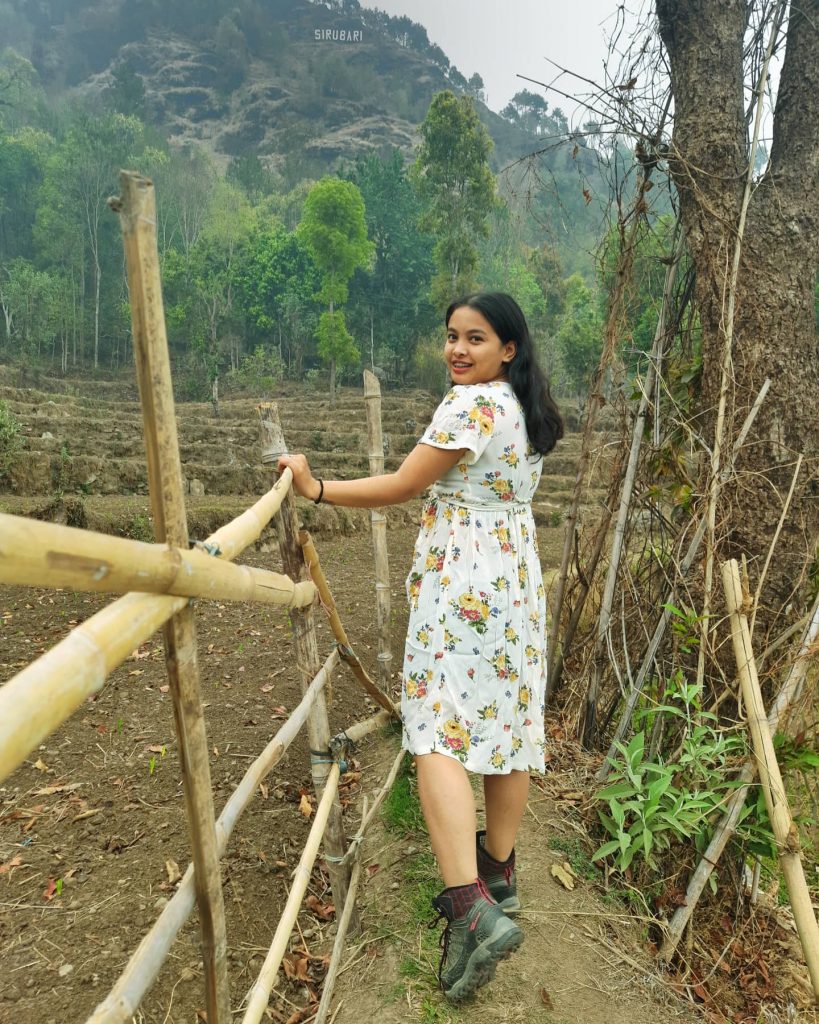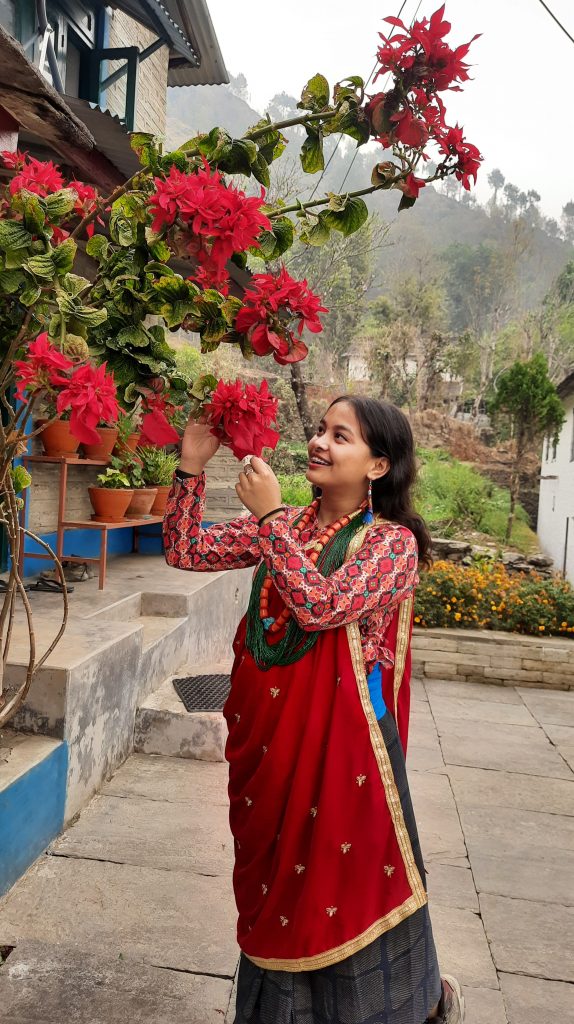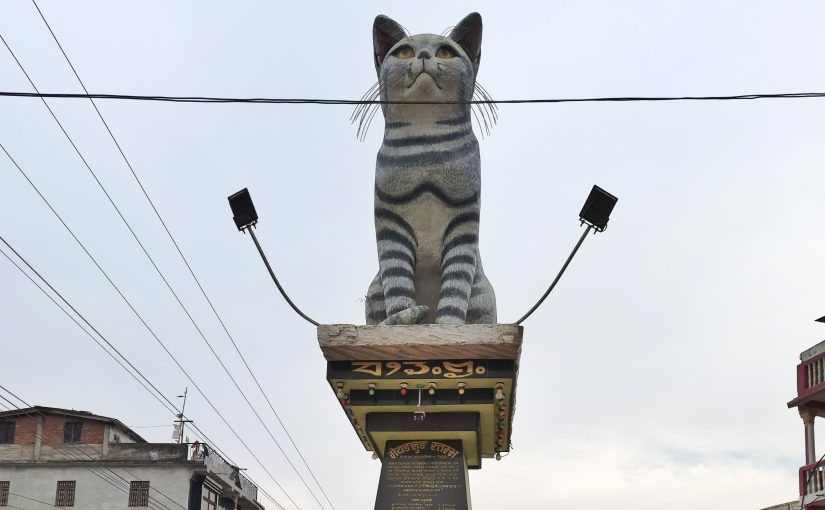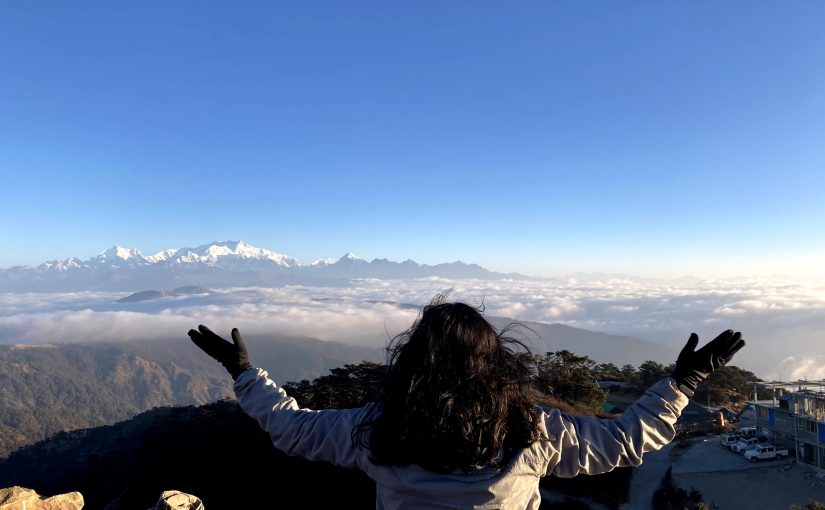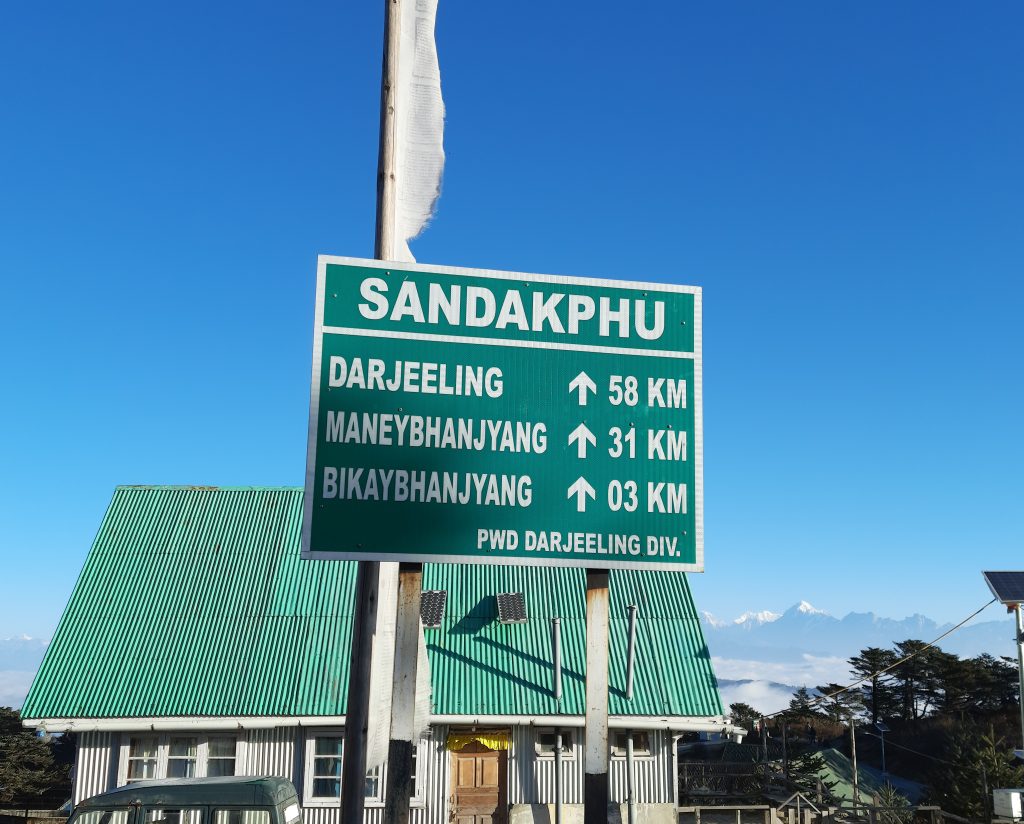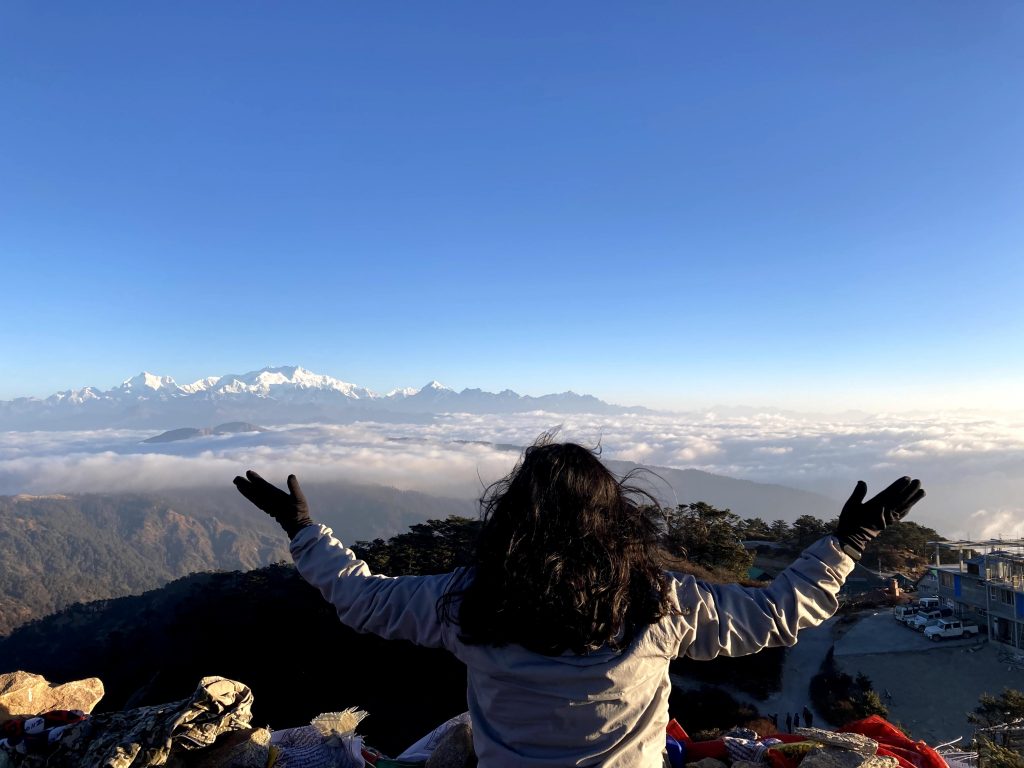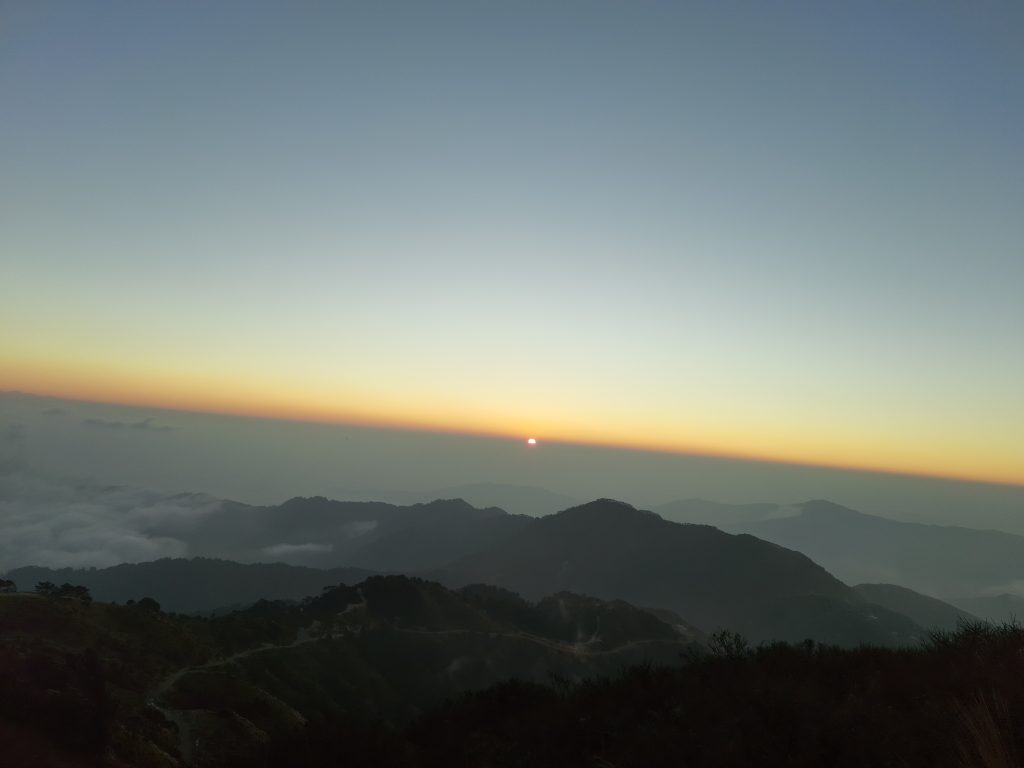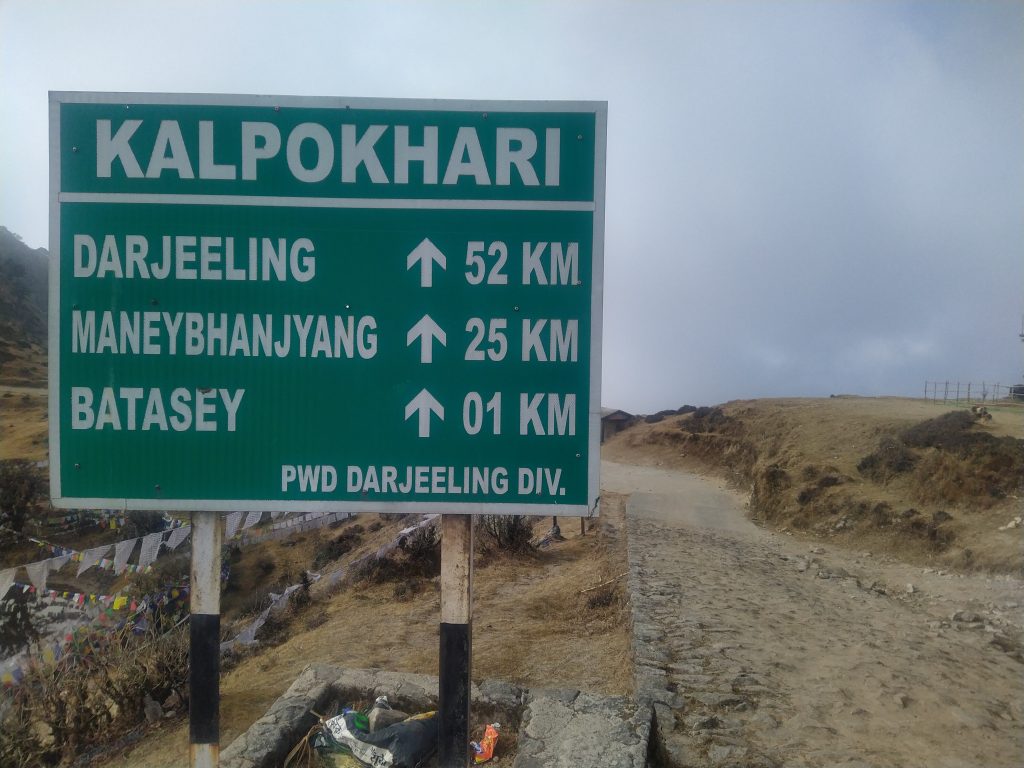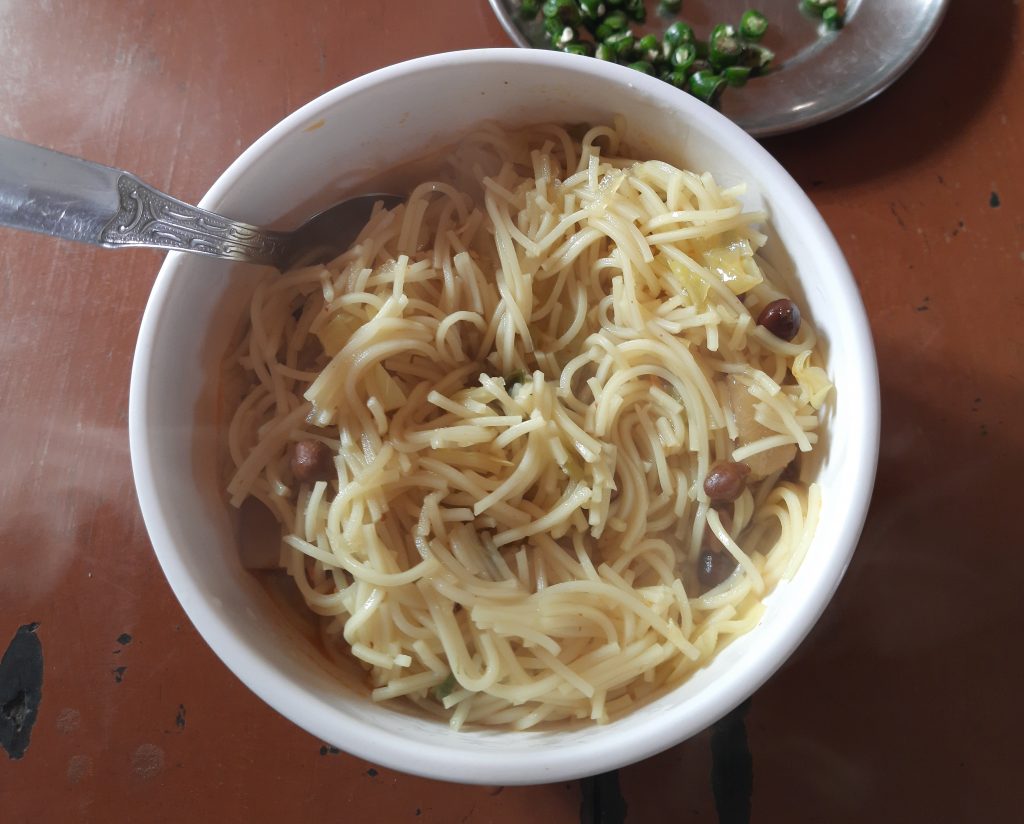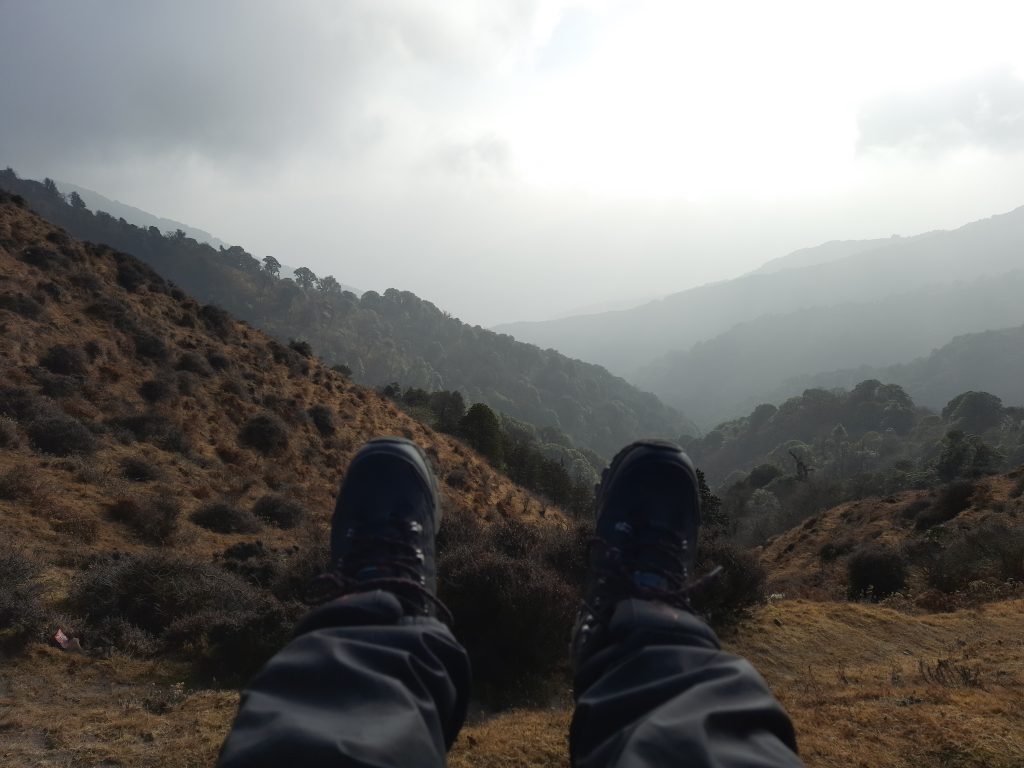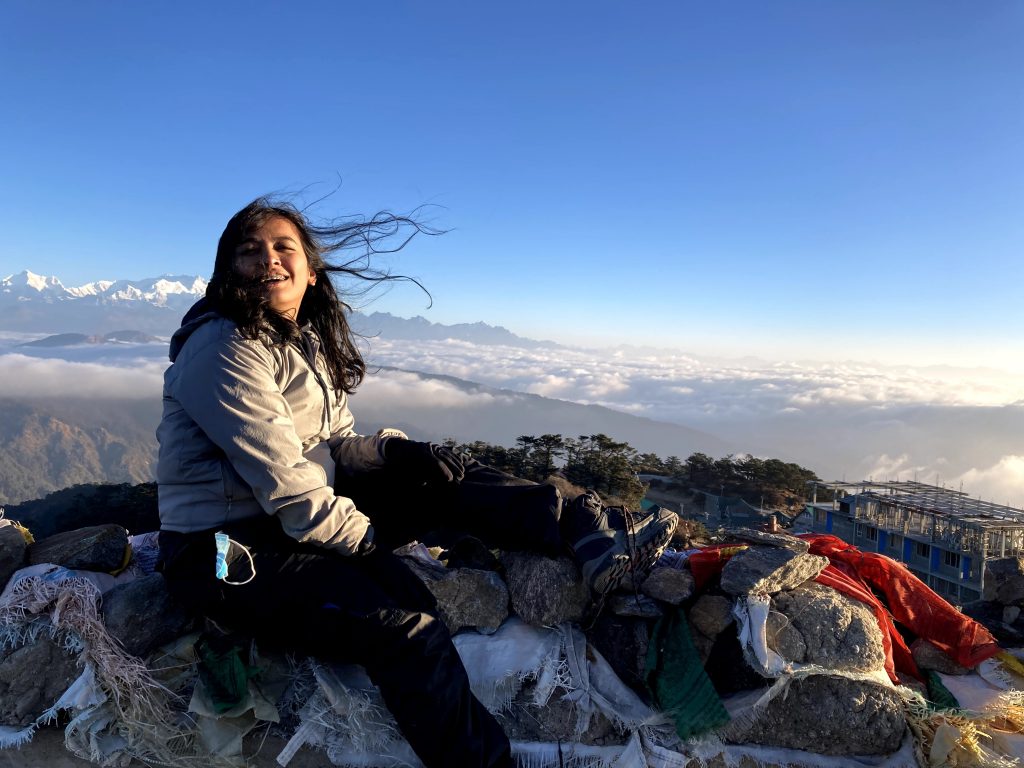Aama Yangri is located in the Helambu area of Sidhupalchowk District, just 90 kilometers north of Kathmandu Valley. The peak’s name means mother in Nepali, and she is said to be the Hyolmo region’s dakini or guardian. The height of the summit is 3771 meters. It has recently gained a lot of attention due to the discovery of its floral route and breathtaking mountain vistas. Rhododendron, pine, and oak trees line the route. Hyolmo culture is also prevalent in the area. Sherpa, Chhetri, Tamang, and other ethnic groups live happily together. The summit is one of Langtang National Park’s jewels.
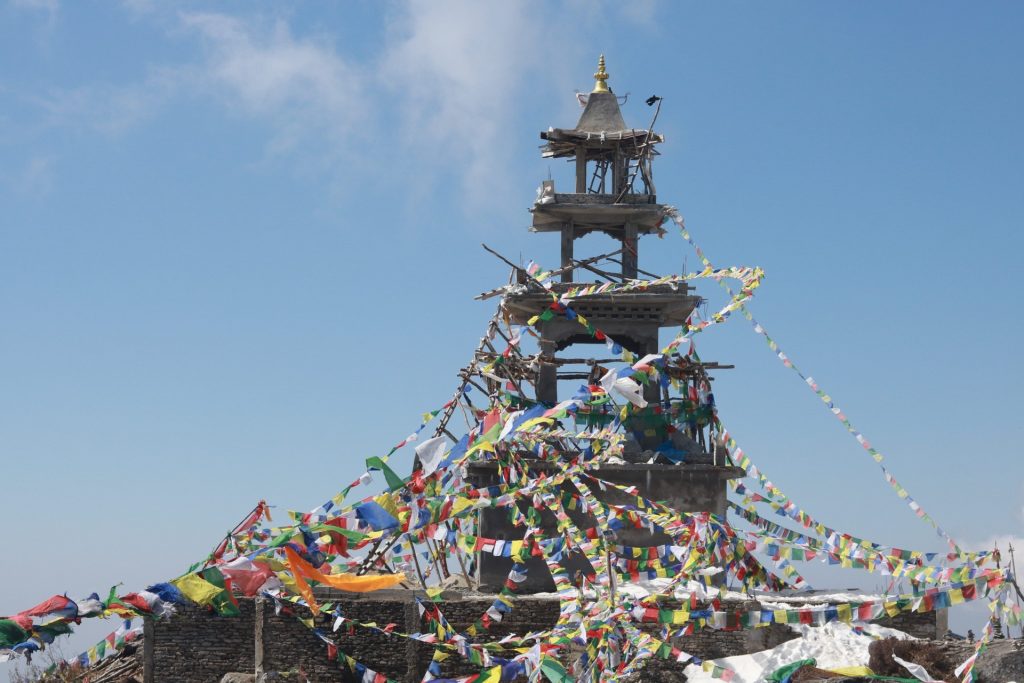
General Information
- Altitude: 3,771 m
- District: Sindhupalchowk
- Duration: 2 days trip (from the Kathmandu Valley)
- Trekking hours: 4-5 hours for one way from Tarkeghyang
- Vehicle hours: 4 hours for one way from Kathmandu to Tarkeghyang
- Vehicle supported: Bike, mountain bike, jeep, bus
- Public vehicle available: jeep, local bus, bike (up to Tarkeghyang)
- Difficulty level: 2/5
- Specialty: panoramic views of Mount Everest, Langtang Ranges, Dorje Lakpa, Gauri Shankar, etc.
- Permit: Foreigners, with the exception of SAARC nations, must get a Langtang National Park permit and pay an admission charge of NPR 3000, whilst SAARC countries must only pay NPR 1500. Nepalese citizens are charged NPR 100 to enter.
- About Bus: Only one bus leaves to Tarkeghyang in two days. The starting point of the bus is Narayntar Shiva Chowk near Baudha. During monsoon, the bus reaches up to Timbu only. So, on monsoon, the trek begins from Timbu.
- Trek Route: The bus route is from Narayantar to Tarkeghyang through Melamchi and Timbu. The trek route is from Tarkeghyang to Aama Yangri Peak.
- Hotel Information in Tarkeghyang: Hotel Yangri Peak, 9848944003
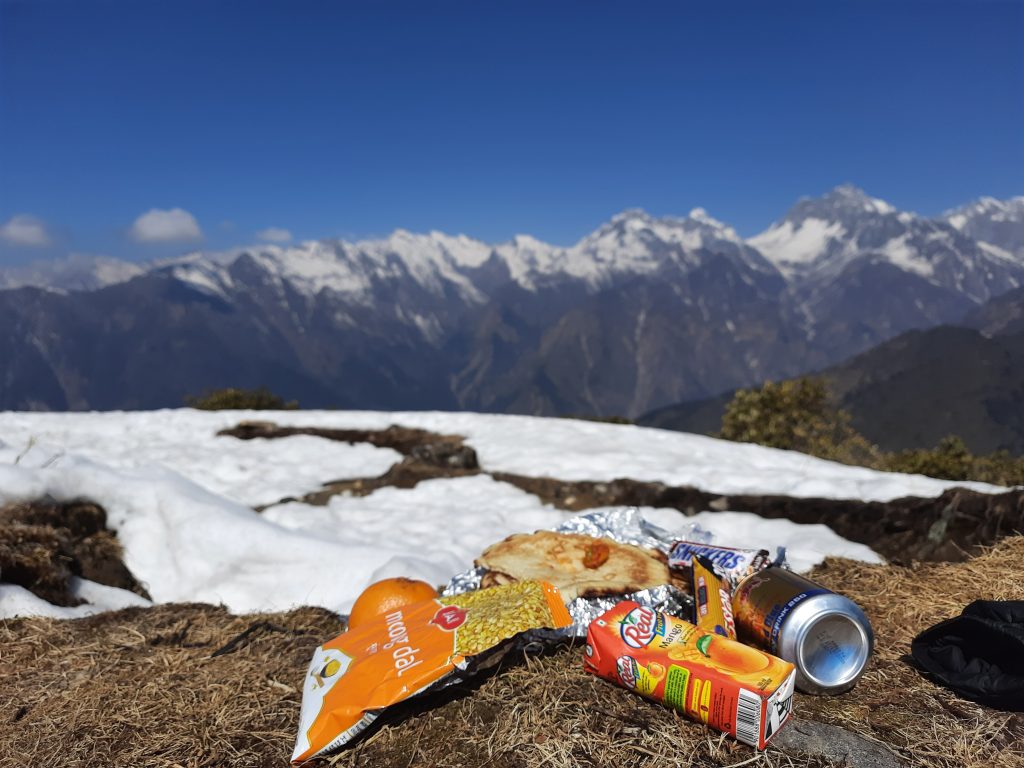
Things To Carry:
- Raincoat
- Trekking poles
- Extra pair of clothes and socks
- Flip-flops
- Snacks
- Medicines
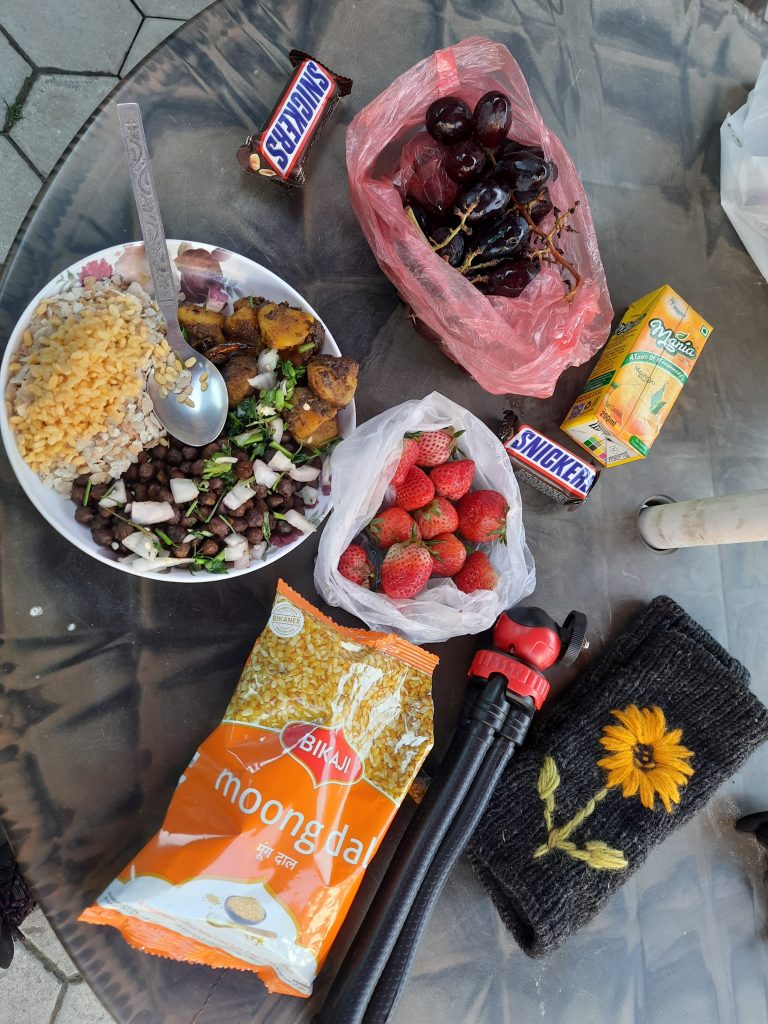
Things To Wear:
- Trekking shoes
- Light and loose clothes (jeans not recommended)
- Sun hat
- Sunscreen
Itinerary
Day 1: Take a bus from Narayantar and reach Tarkeghyang on the first day.
Day 2: Trek to Aama Yangri Peak and back to Tarkeghyang and to Kathmandu or extend the trip to day 3.
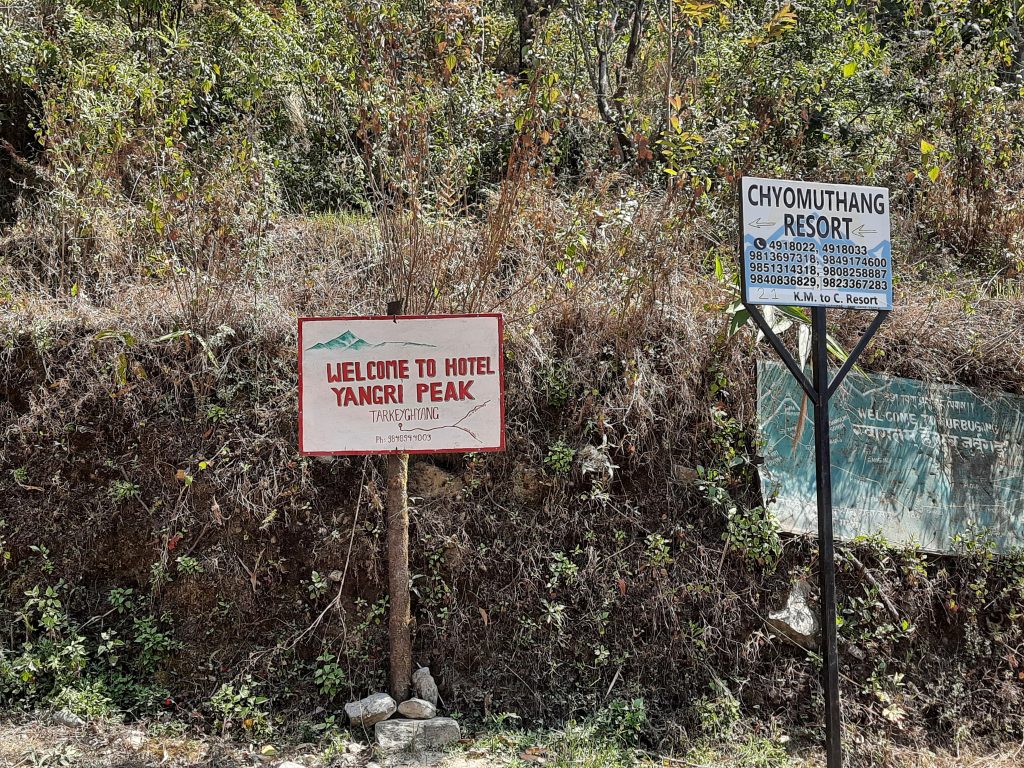
Specialty of the Trek!
- You can finish this trek over a weekend! All you need is two days from Kathmandu and the trek is over.
- This is the easiest trek I ever had.
- It is a safe trek for solo travelers too as you can return back to the village within half day.
- You get nice hospitality in Tarkeghyang. The place has been badly affected by 2015 Earthquake but it is getting better.
- It is a virgin trail.
- There is no chance you get to buy a coke or snicker after you begin trekking from Tarkeghyang. So, carry whatever you might crave during the trek. Well, carry your wrappers back with you!
- Local Tongba, Tibetan breakfast, Nepali tato khana, amazing Mountain View, nice weather, and amazing breeze!
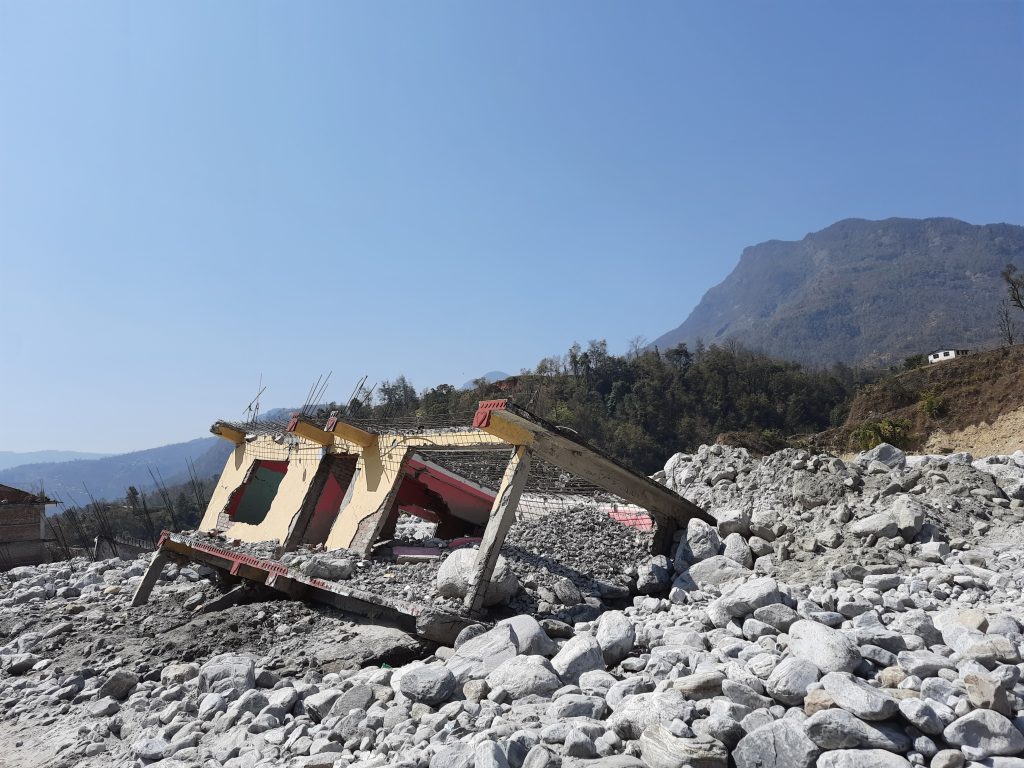
My Trekking Experience
So, on March 12, 2022, I chose to travel Aama Yangri. It was a last-minute idea when the trekking expedition to Tilicho was postponed owing to severe snowfall blocking the path. So, I started my journey with very little research. I couldn’t find a bus that would take me directly to Tarkeghyang since it was an alternative day for the bus. As a result, I took the bus up to Timbu. It was a nice walk from Timbu to Tarkeghyang.
I left Kathmandu at 8:00 a.m., and between 1:00 p.m. and 2:00 p.m., I had arrived at Tarkeghyang, the last stop of the day. Melamchi’s path provided a terrifying perspective. The remnants of structures that were devastated by a recent flood were found along the Melamchi riverbank. Aside from that, the path offered spectacular views of the mountains and greenery. It was mostly off-road.
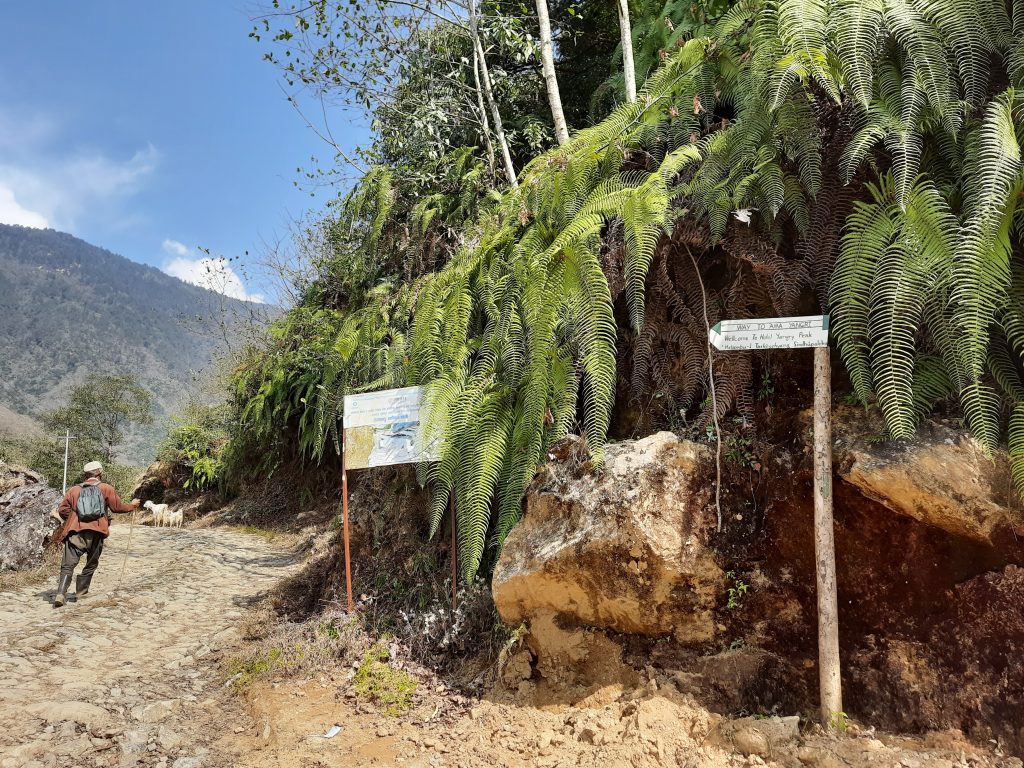
Tarkeghyang was stunning. I stayed at Hotel Yangri Peak, which provided excellent service. The nicest aspect about this walk is that you arrive at the accommodation well before dark, allowing you to see the area on the same day. Near where I stayed, there was a gumba. The colorful ribbons linked to the gumba let in a beautiful wind from beyond the mountains.
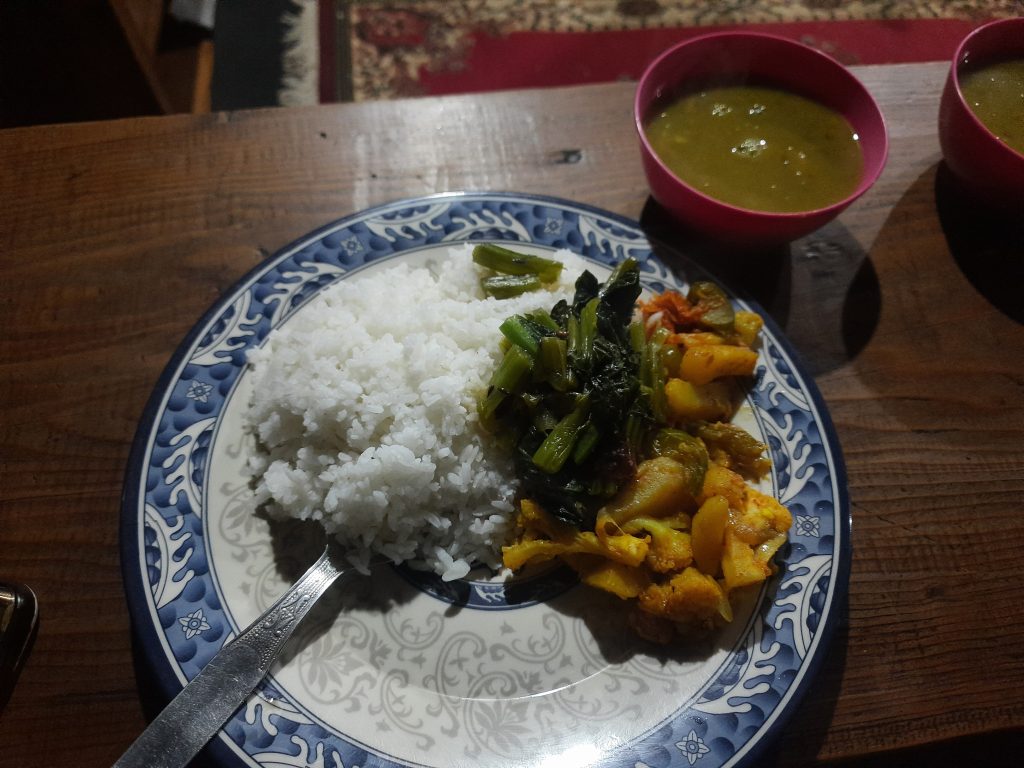
I ate a delicious meal and drank some powerful tongba. The hot shower was the finest feature of the accommodation! With a room fee of NPR 1000, the facility was rather inexpensive. Before supper, I had the finest Rara noodles soup with Rayo ko Saag.
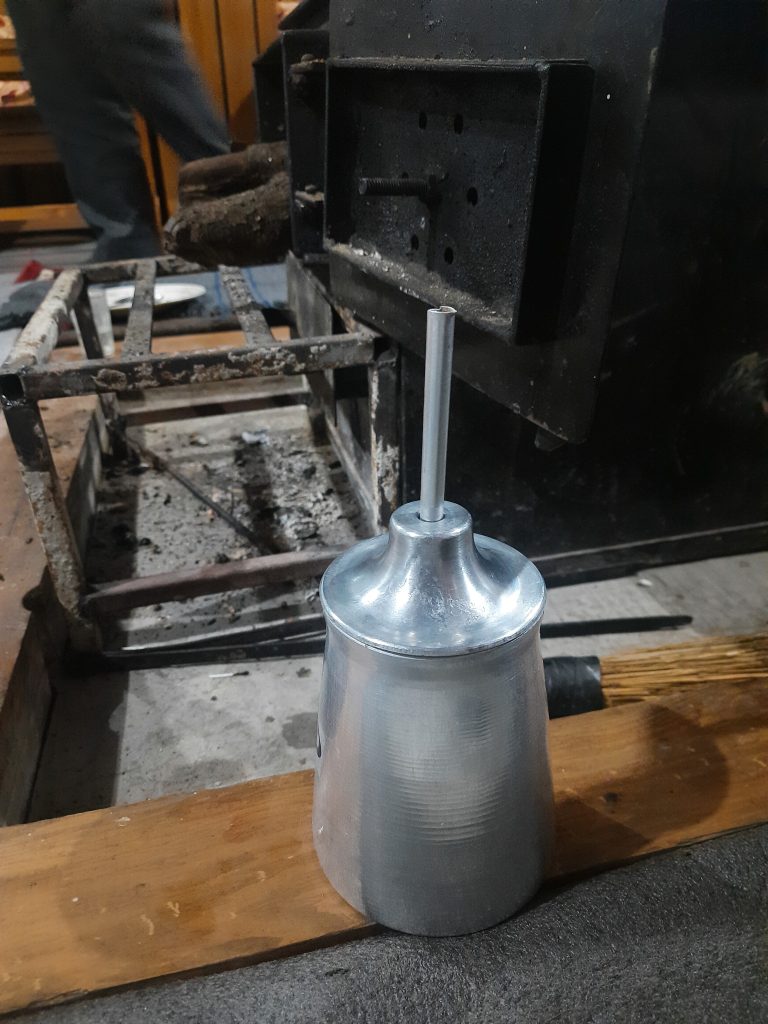
The next day, I awoke at 5:00 a.m., ate a delicious breakfast (honey and peanut butter pancakes with tea), and began hiking at 6:00 a.m. There are two options available. You may ride your bike up to Jhumothang and then start walking from there. Trekkers coming from Tarkeghyang might use a different track that has a lot of steps. STAIRS, STAIRS, STAIRS!
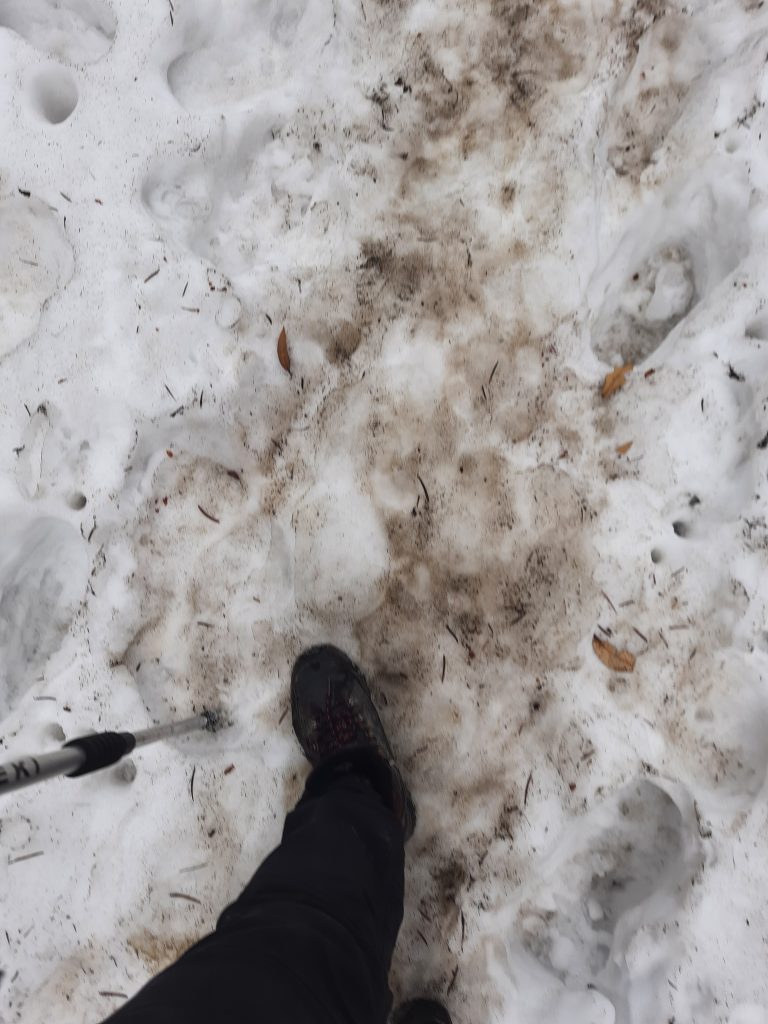
Pangshyole is the next destination after Jhumothang. It will take you two hours to get there. It features a little resting area with a spectacular view. The trail was not difficult for me. However, it might be challenging for first-time hikers.
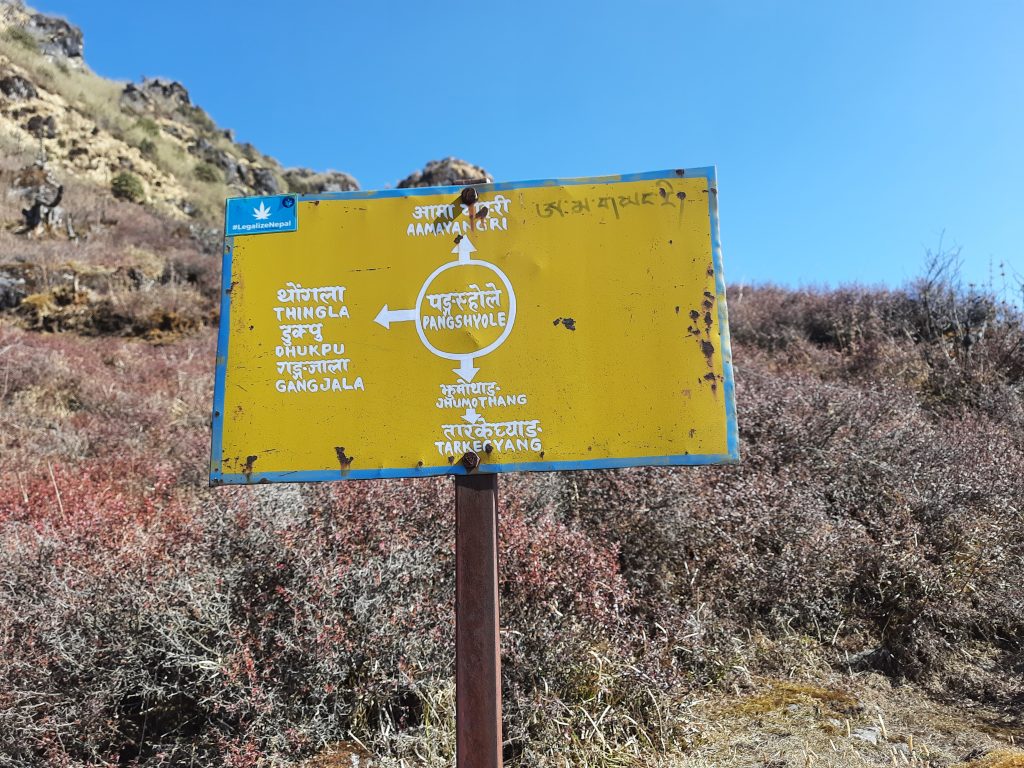
Within one to two hours of leaving Pangshyole, I arrived at Aama Yangri Peak. The path was covered in snow. It was also really chilly. A gumba can be found at the end of the trip (which was under construction). The view from the location was magnificent. I had brought some leftover pancakes and other munchies, which I ate and carried the wrappers back to Tarkeghyang. I arrived in Kathmandu on the same day. So, it was only a two-day hike for me.
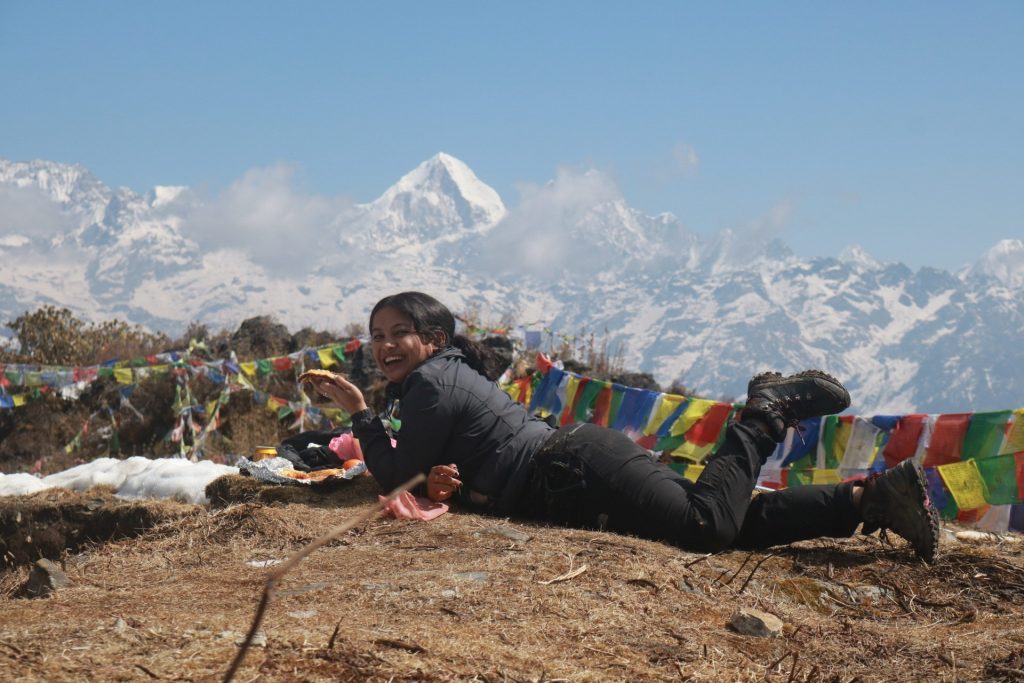
The thing I forgot to talk about is the wildflowers along the trail. The purple wildflowers were covering the hills so beautifully. And it also had rhododendron trees, but unfortunately, not most of the trees were blooming rhododendrons.
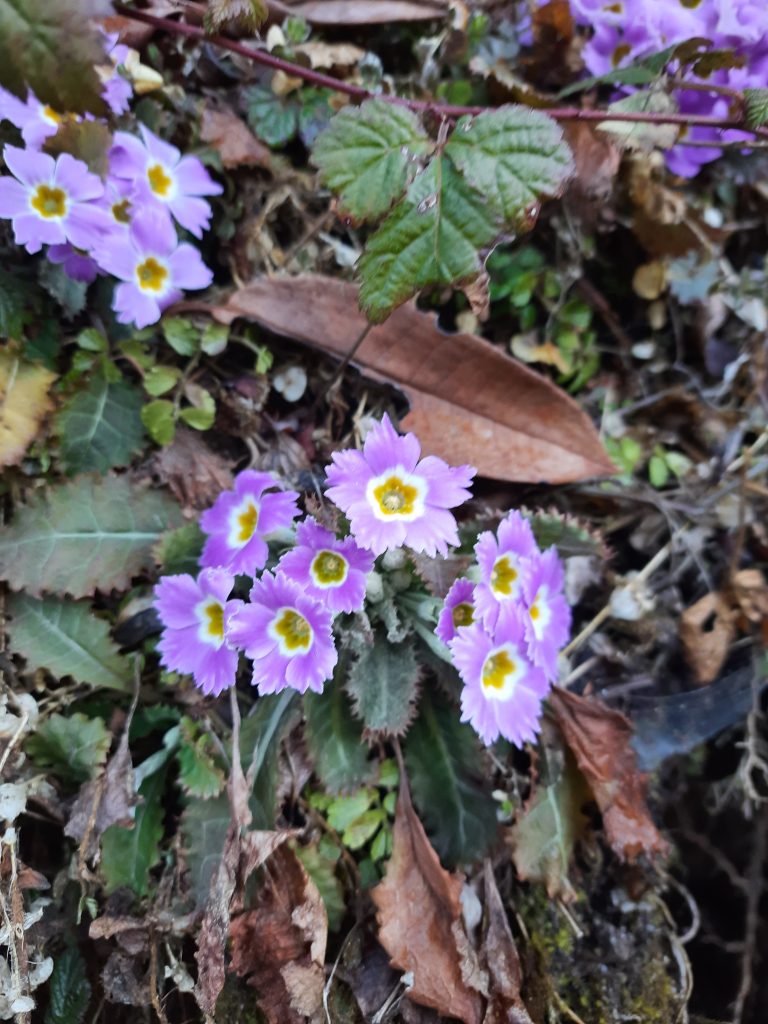
If you reside in or near the Kathmandu Valley, you should go on this tour. It has a lot to give. The pathways are empty and ready for your footsteps. Just a small request: please do not litter the trail. On the journey, there was a lot of garbage created by humans.
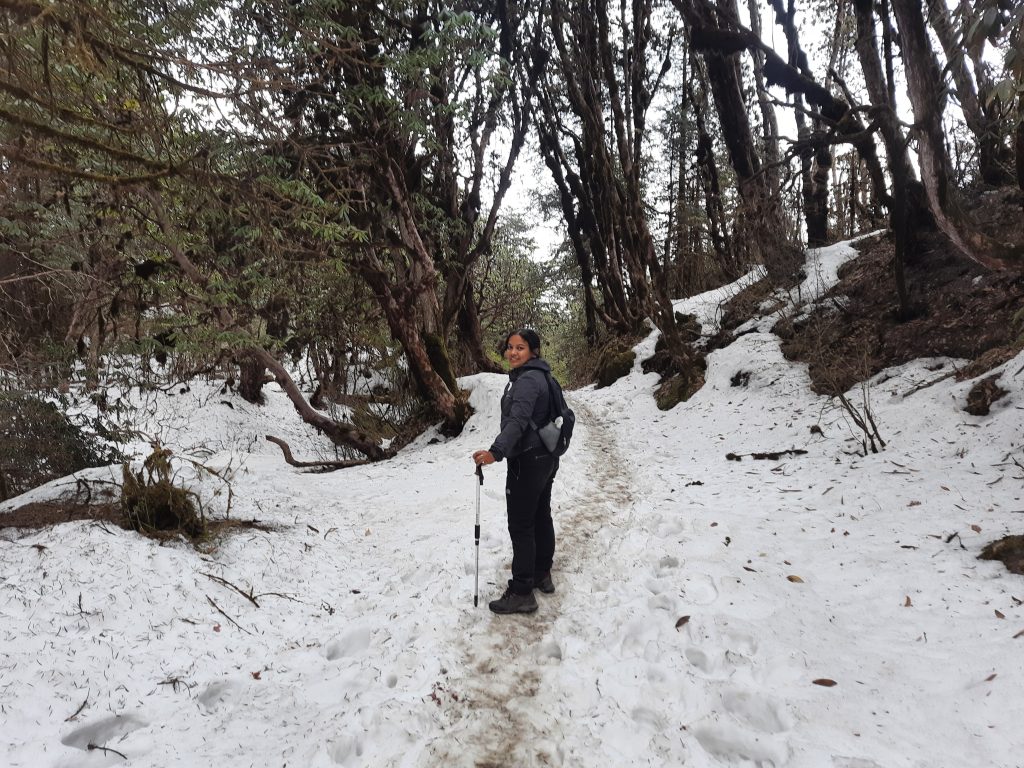
Furthermore, if you are staying in Tarkeghyang, speak with local residents. You might hear unexpected stories about how their lifestyles changed after the earthquake. You’ll also appreciate learning about their distinct cultures.
Aleena
Rayamajhi
5/23/2022
